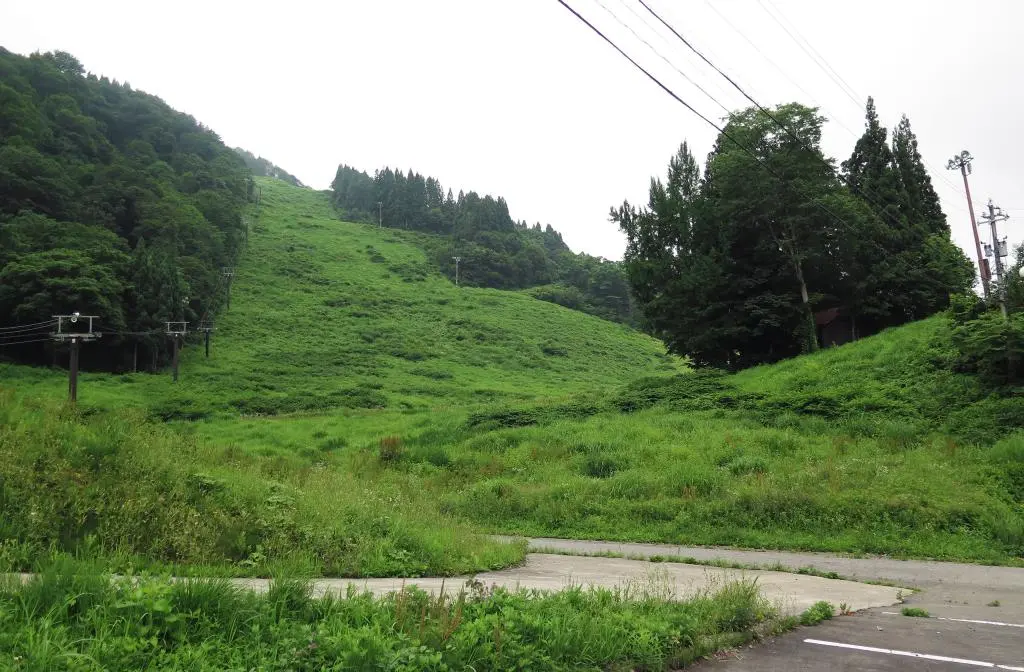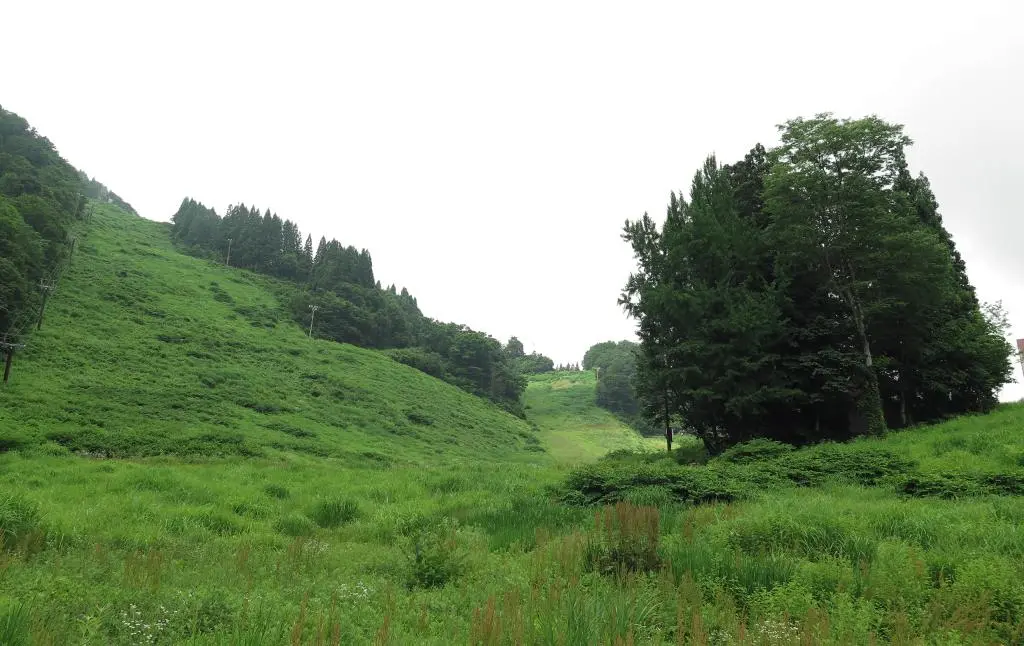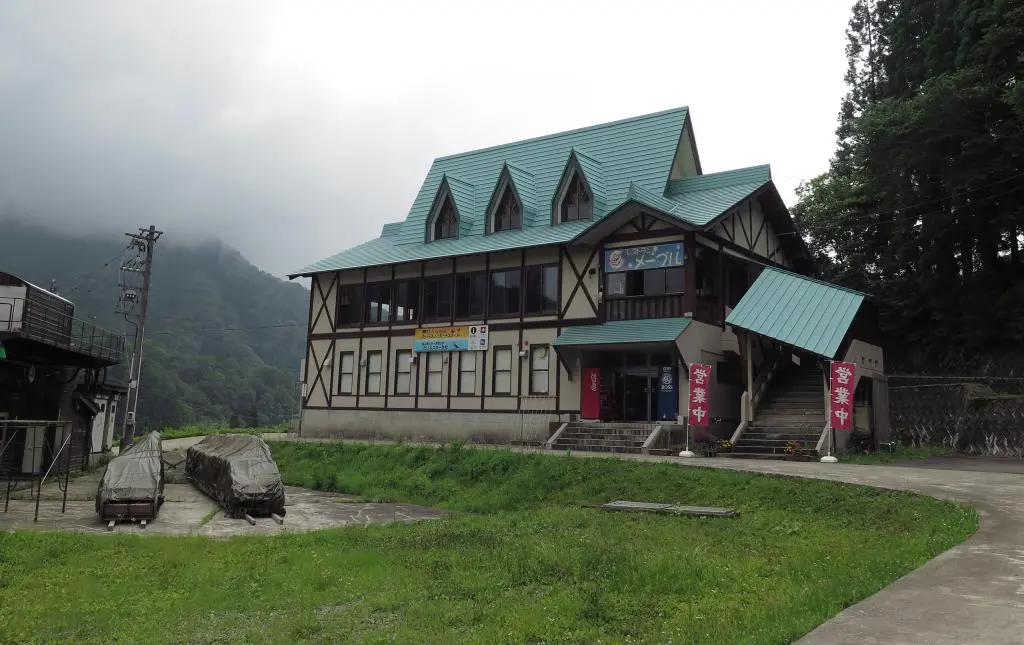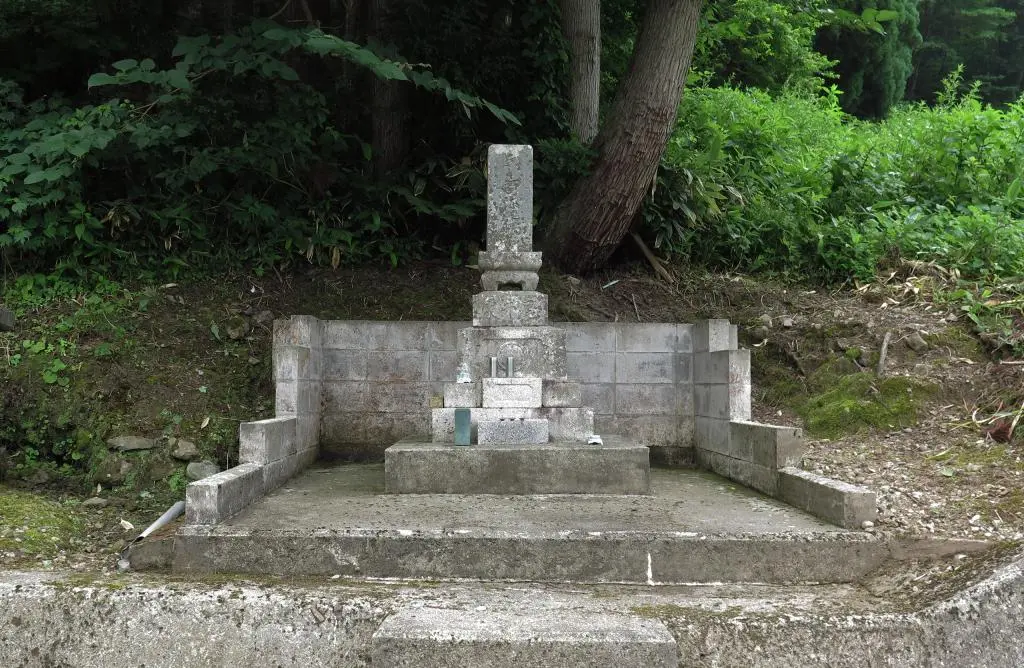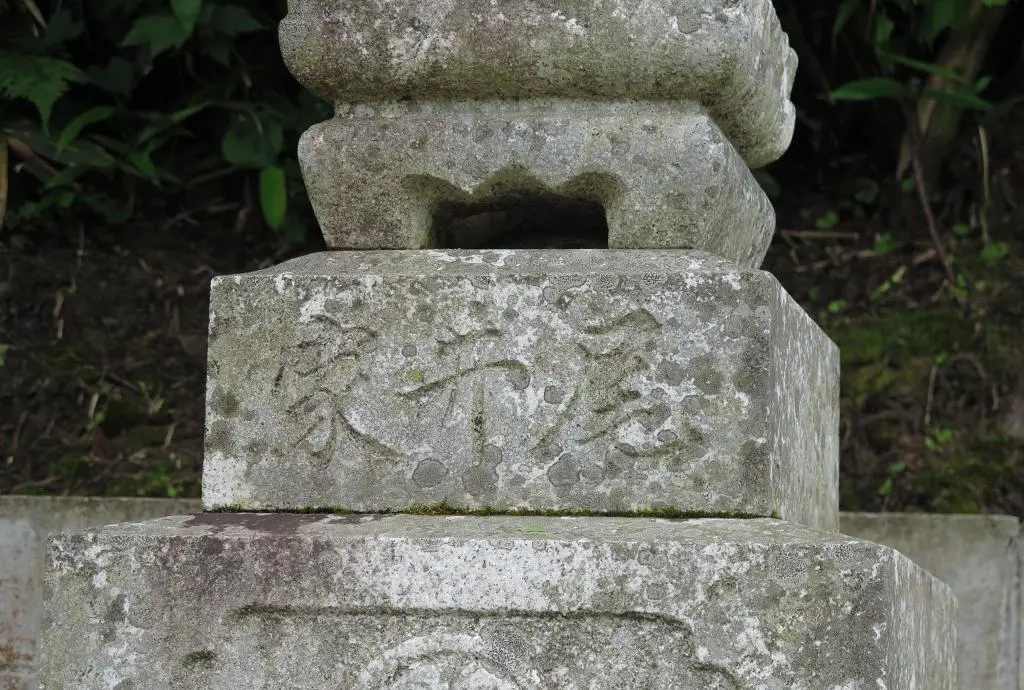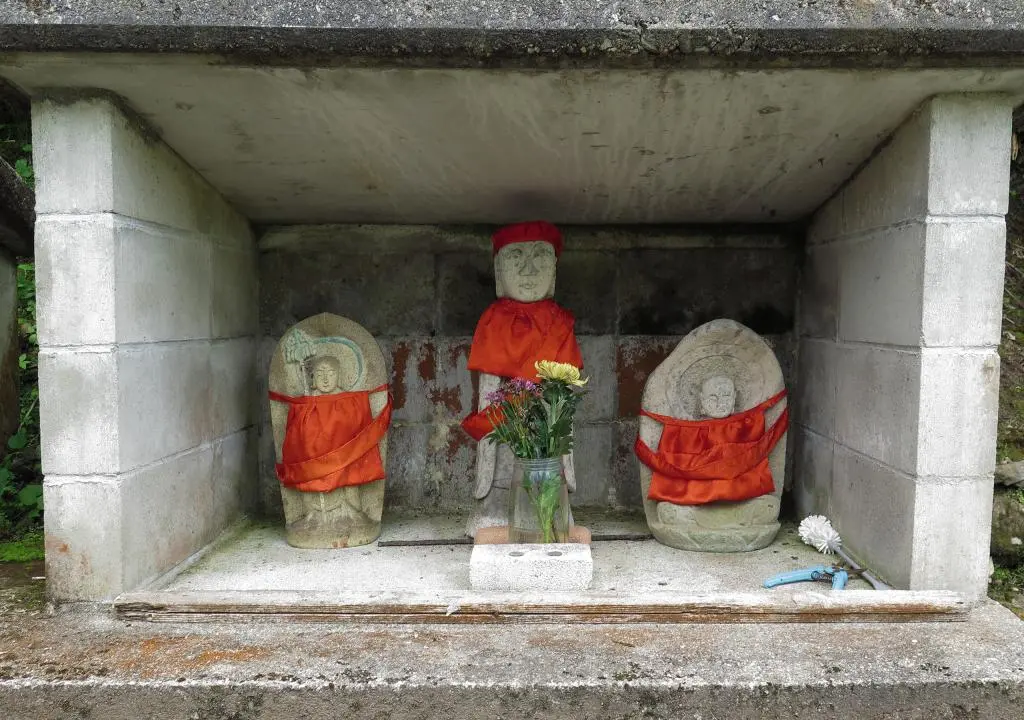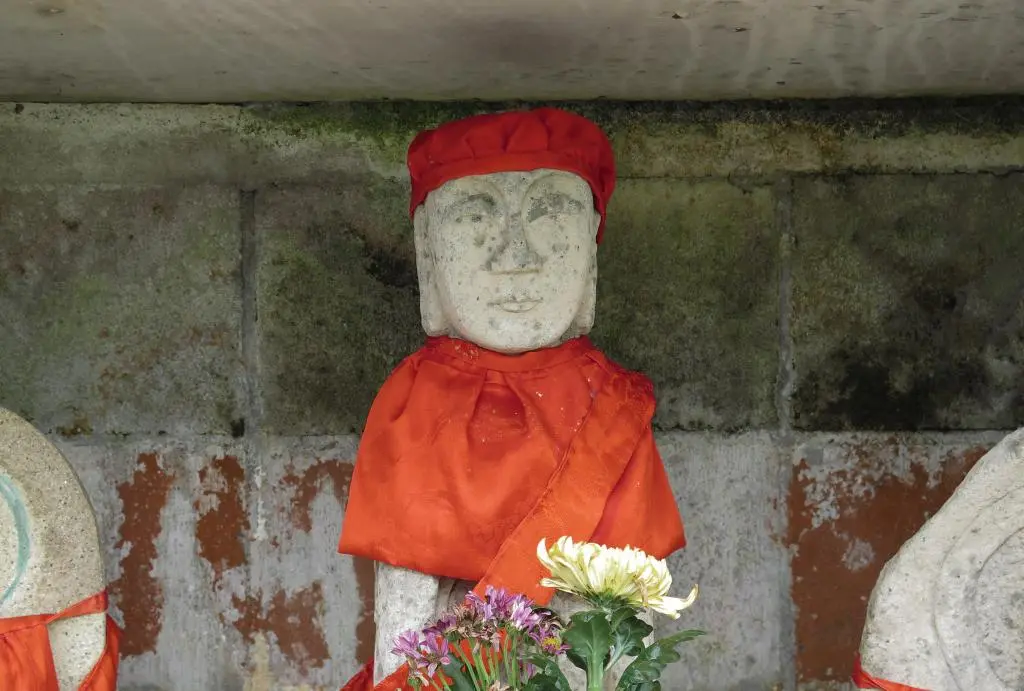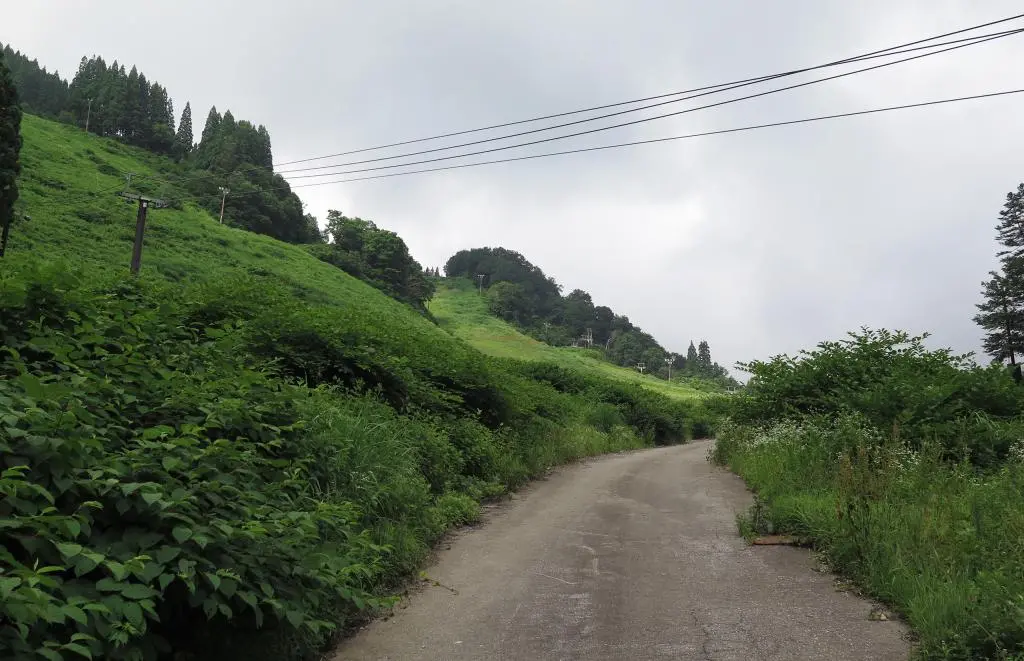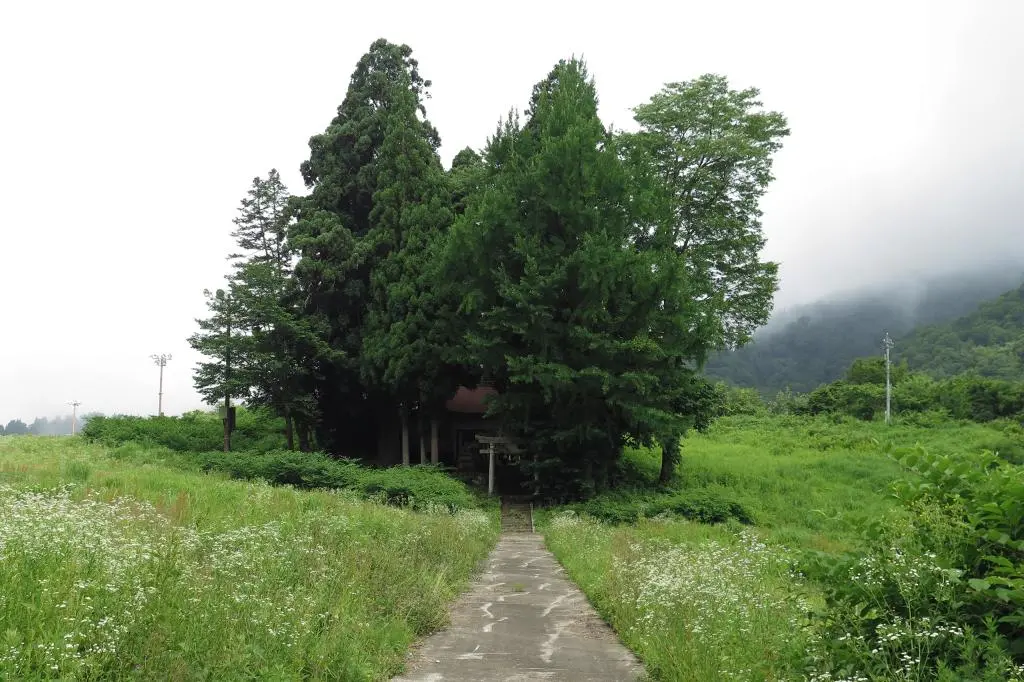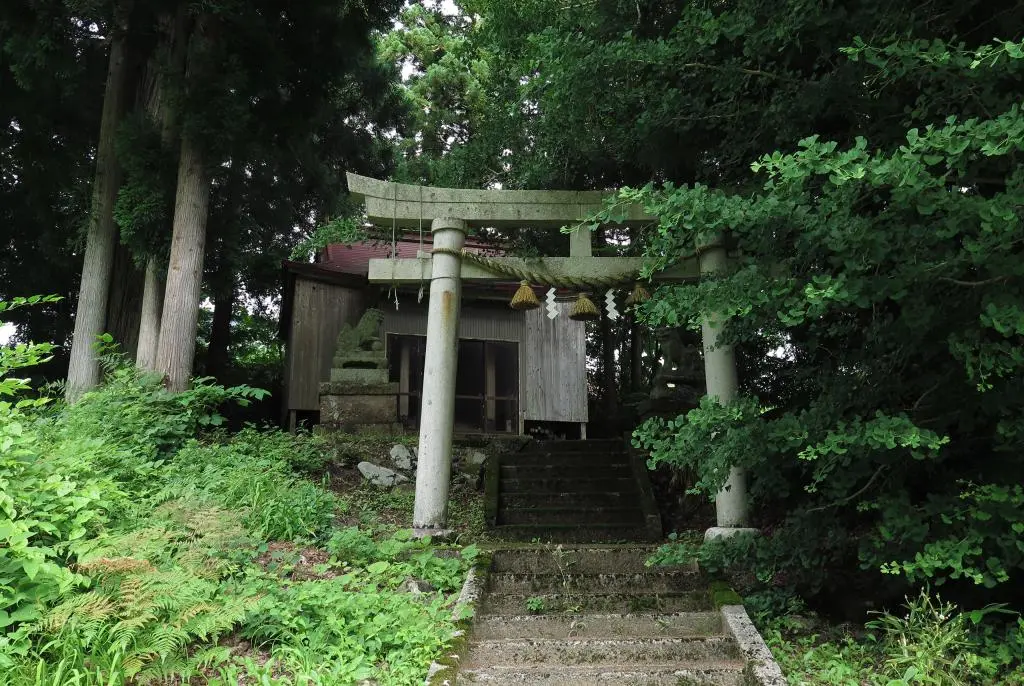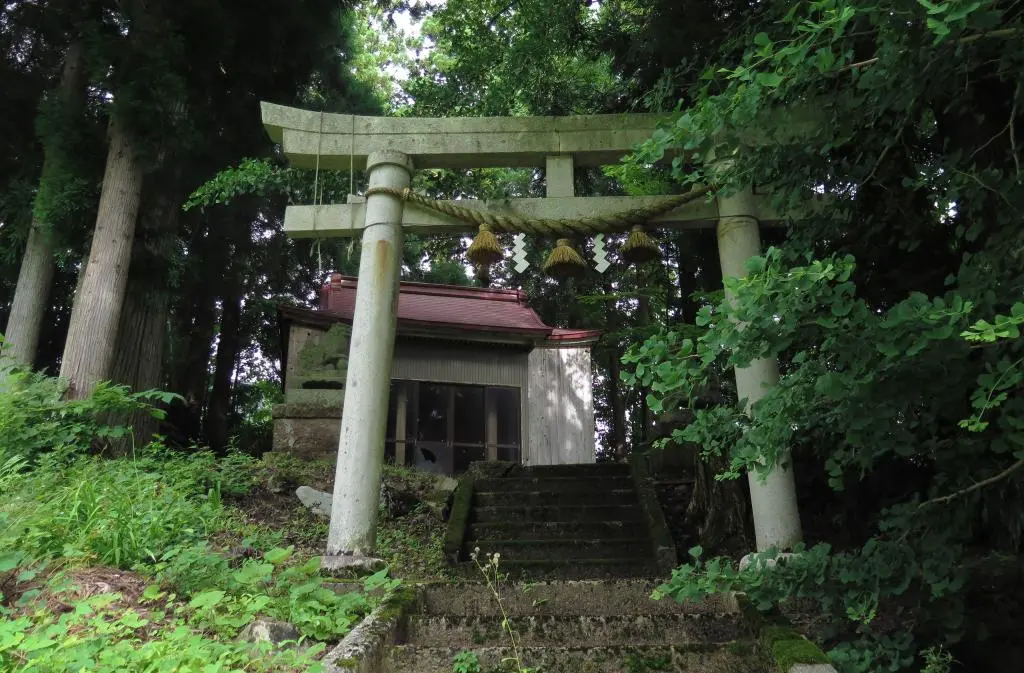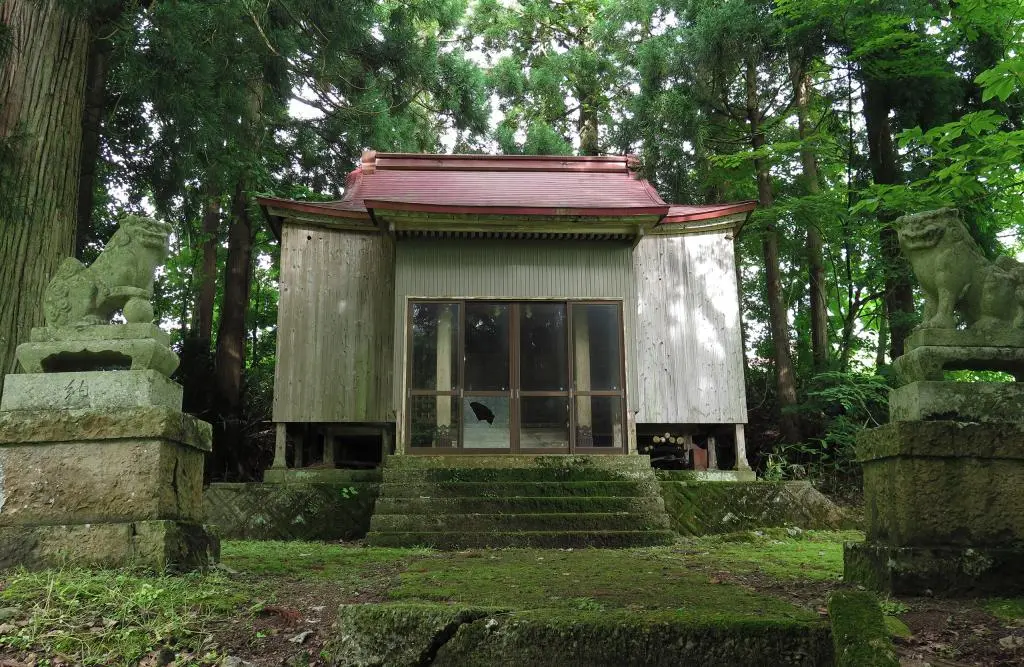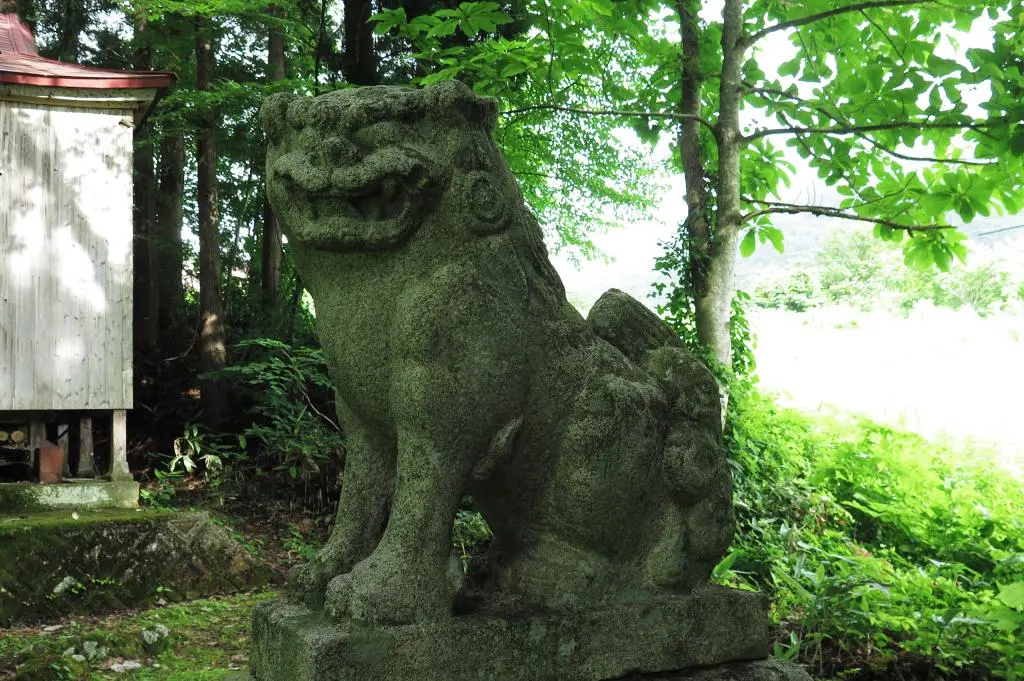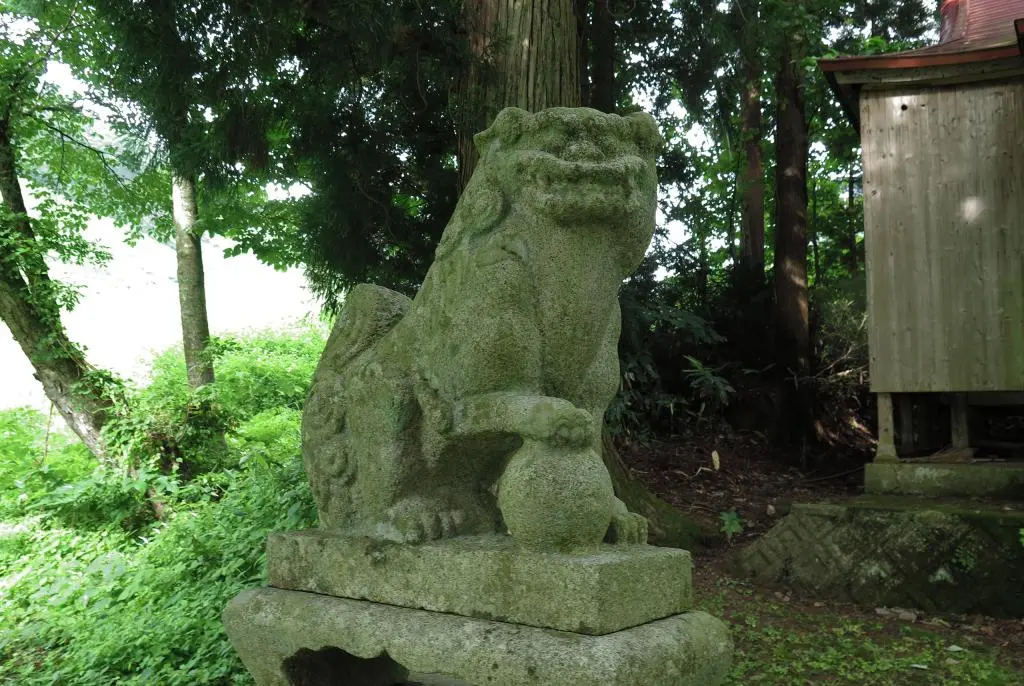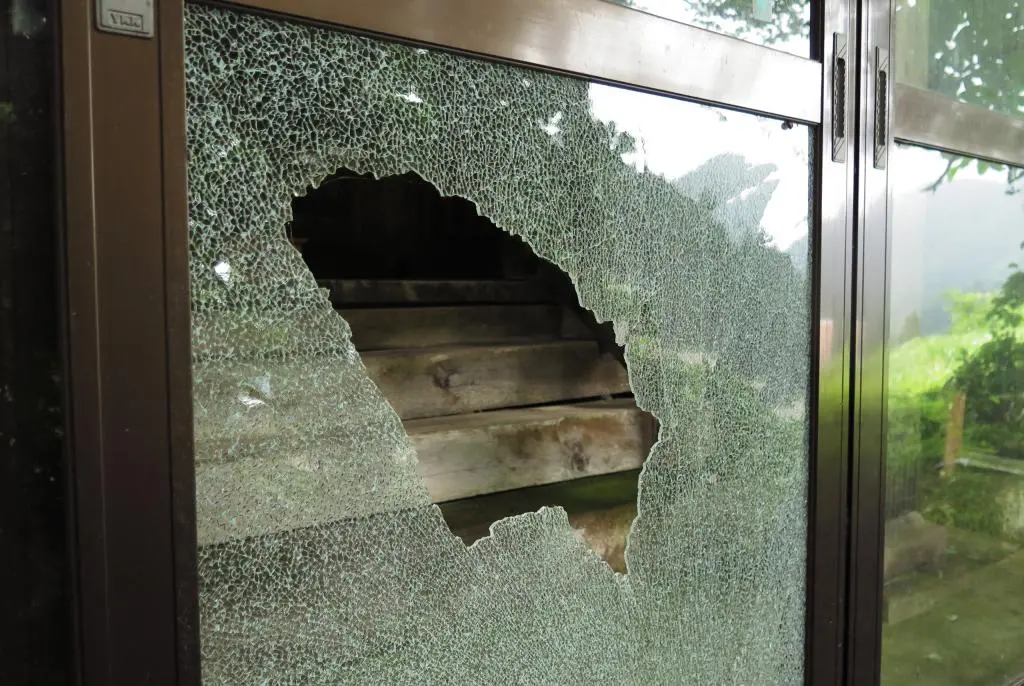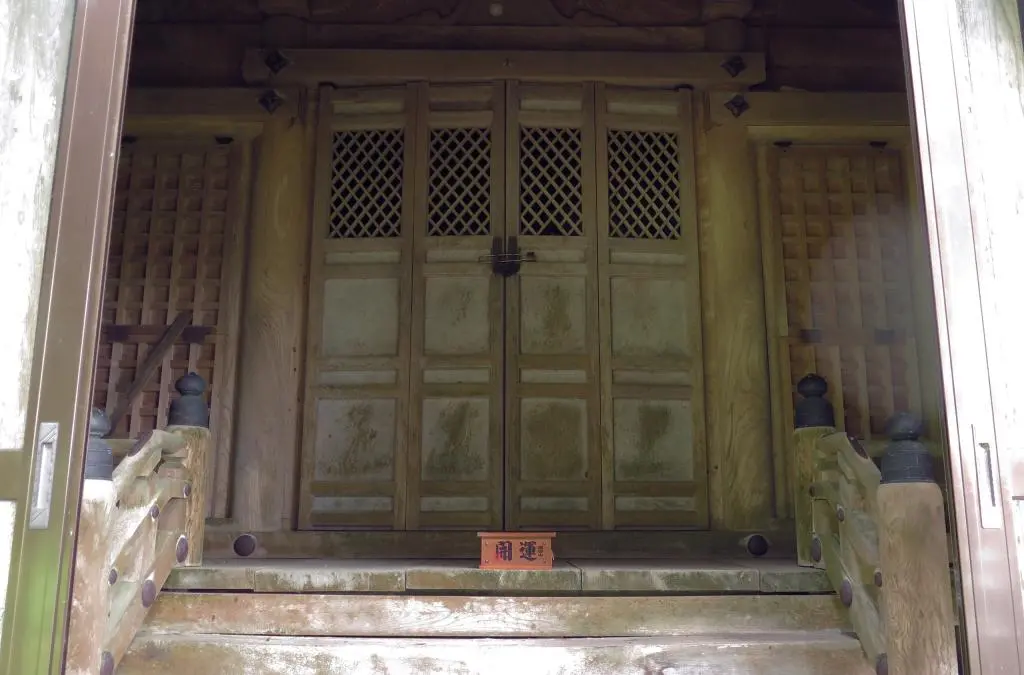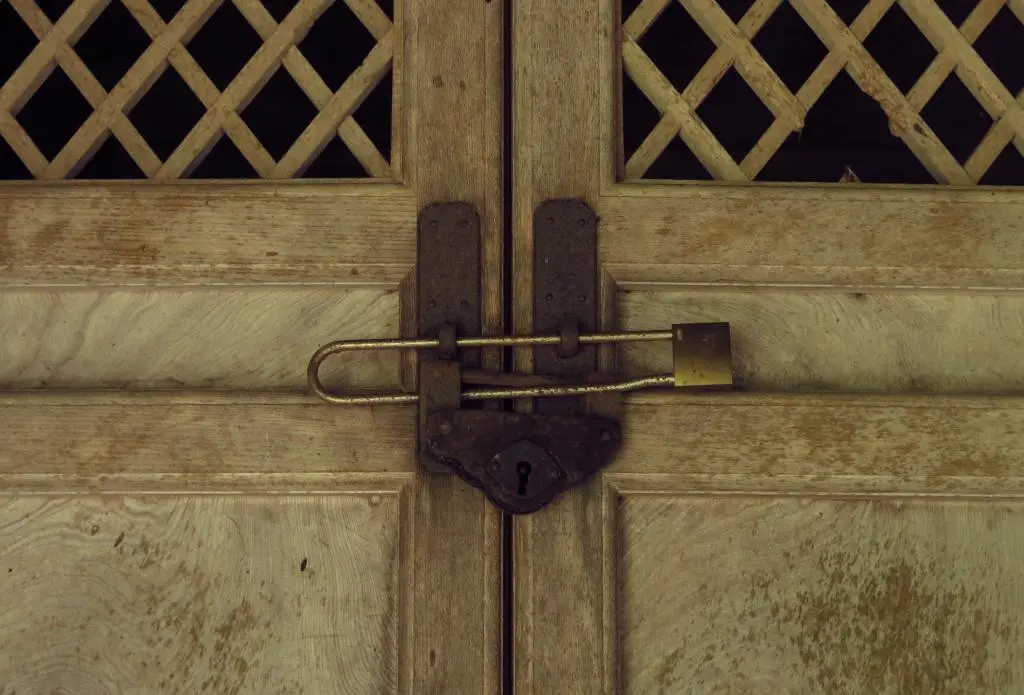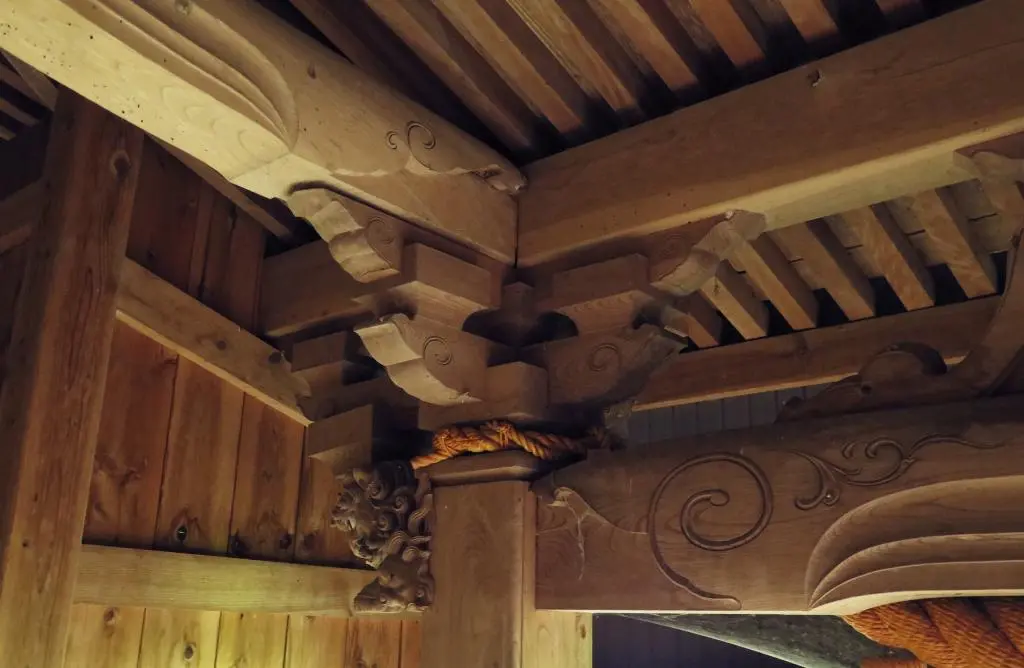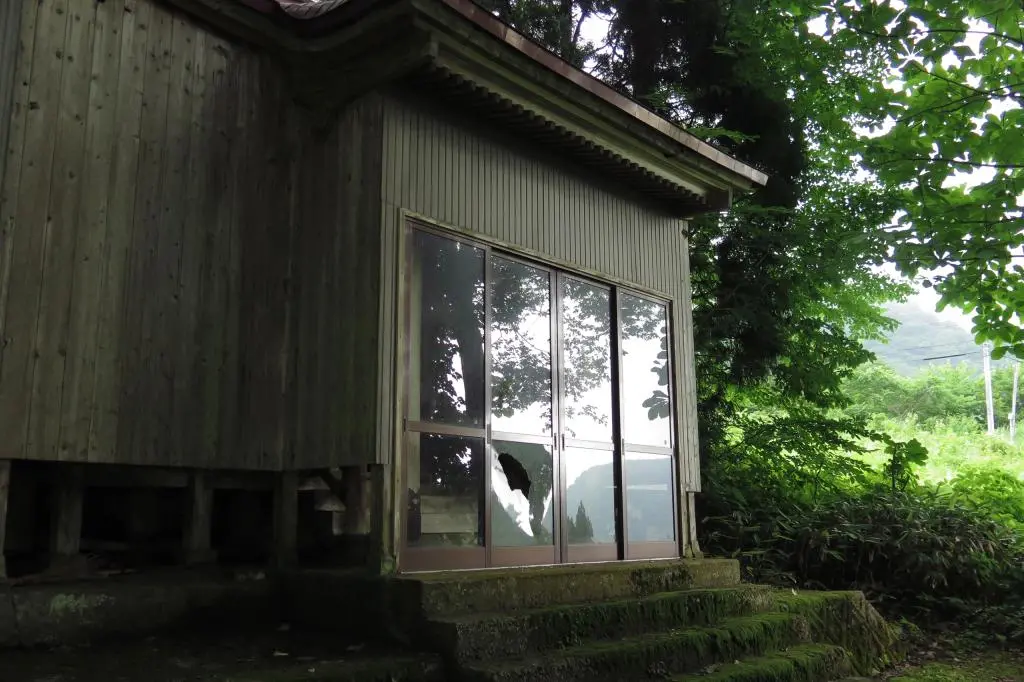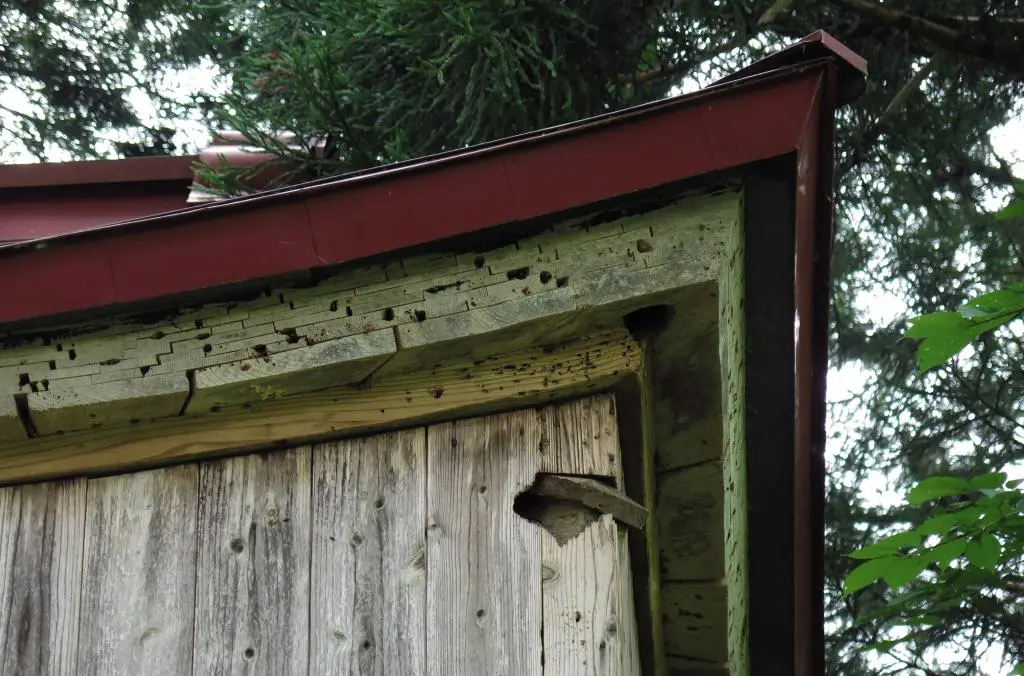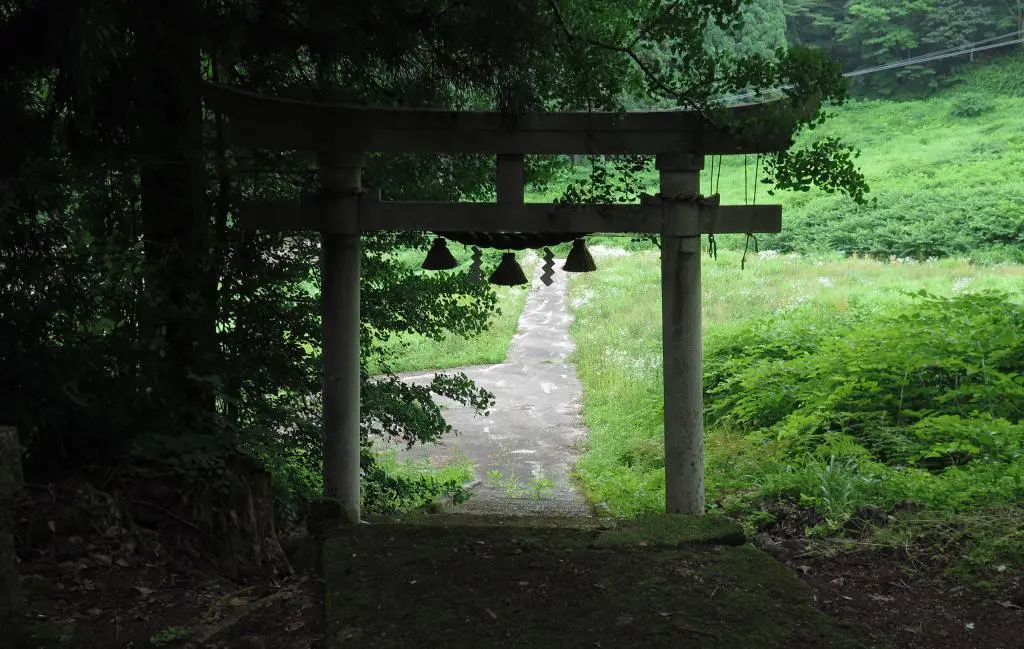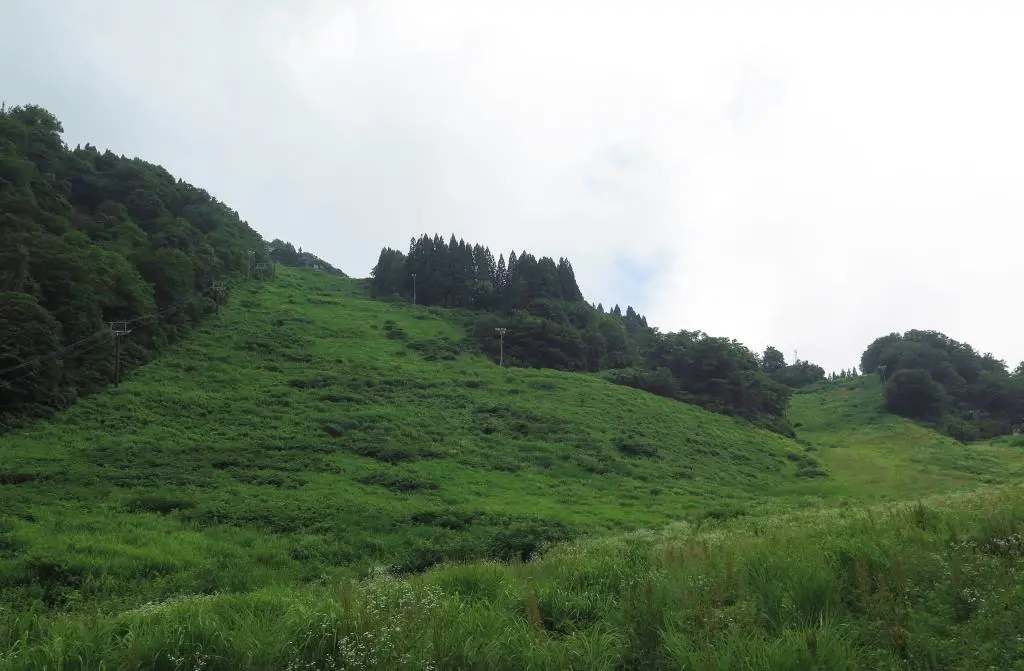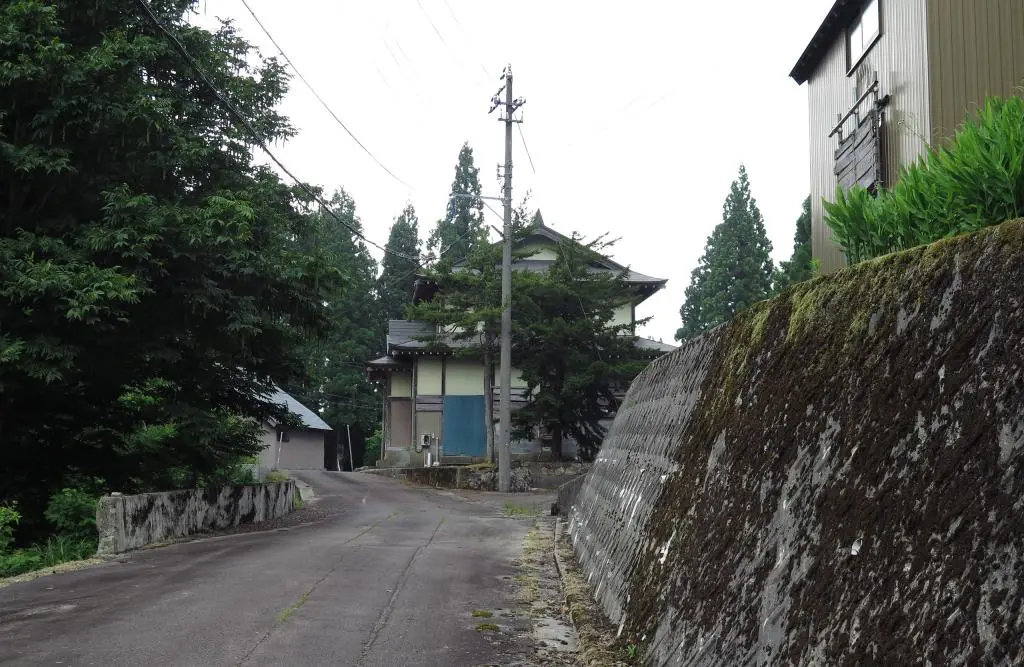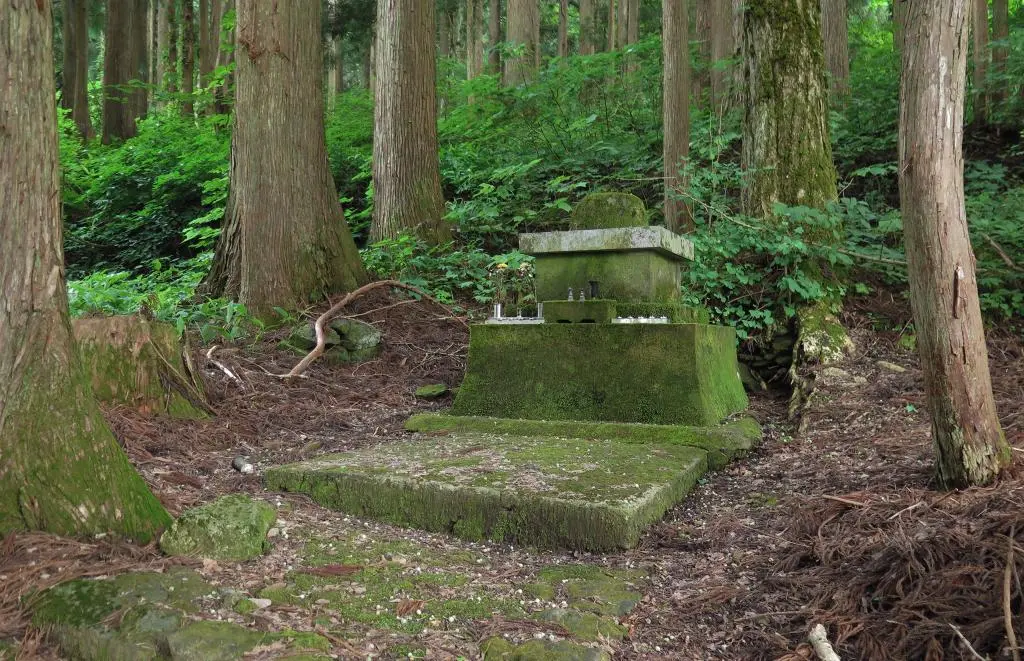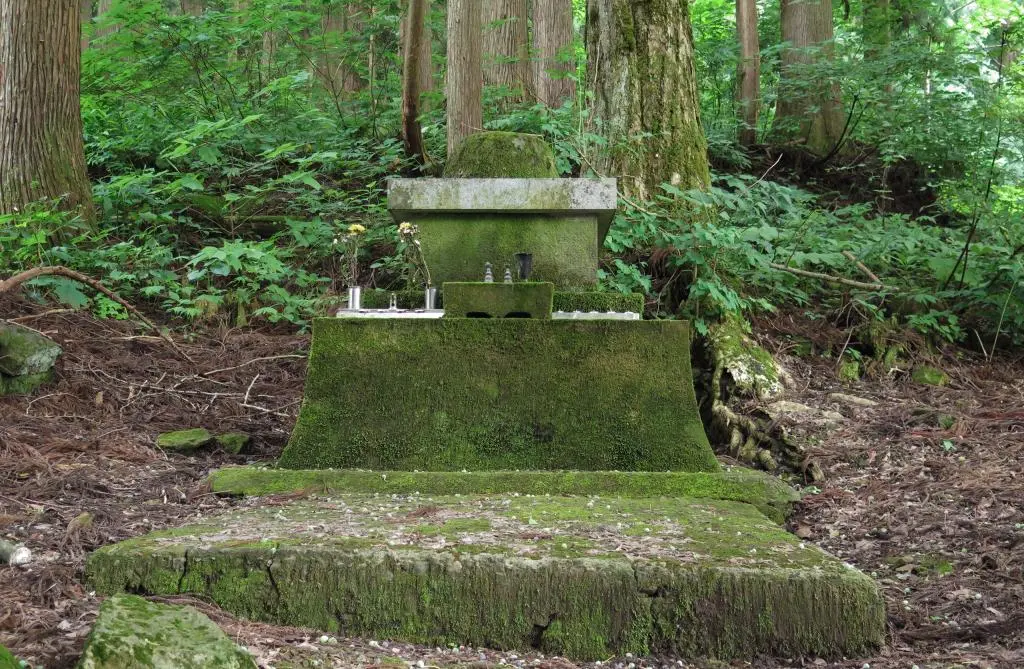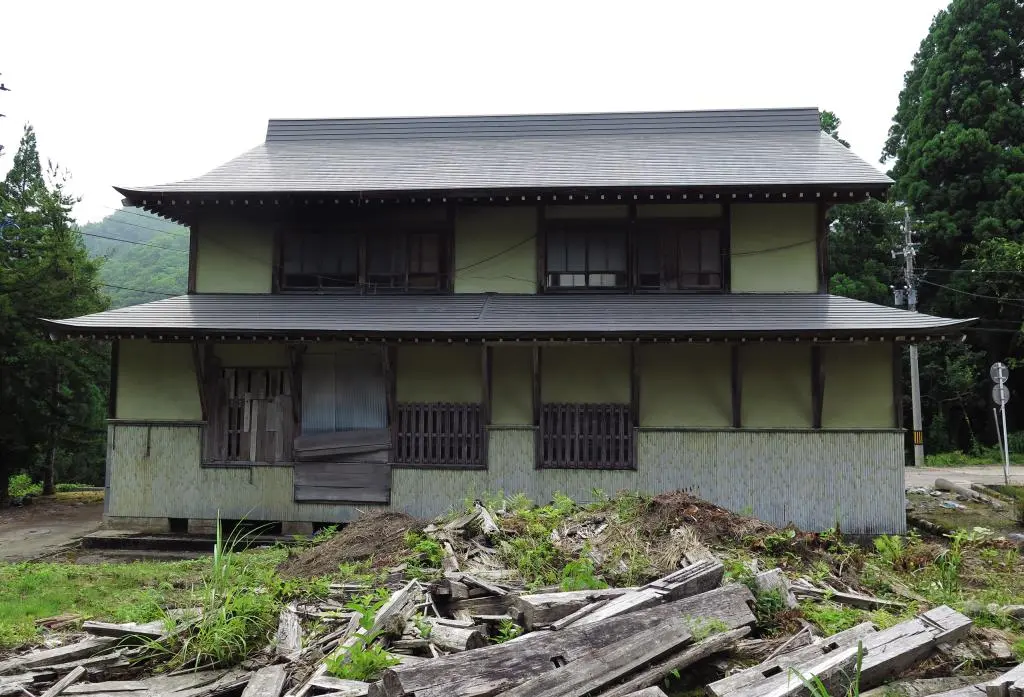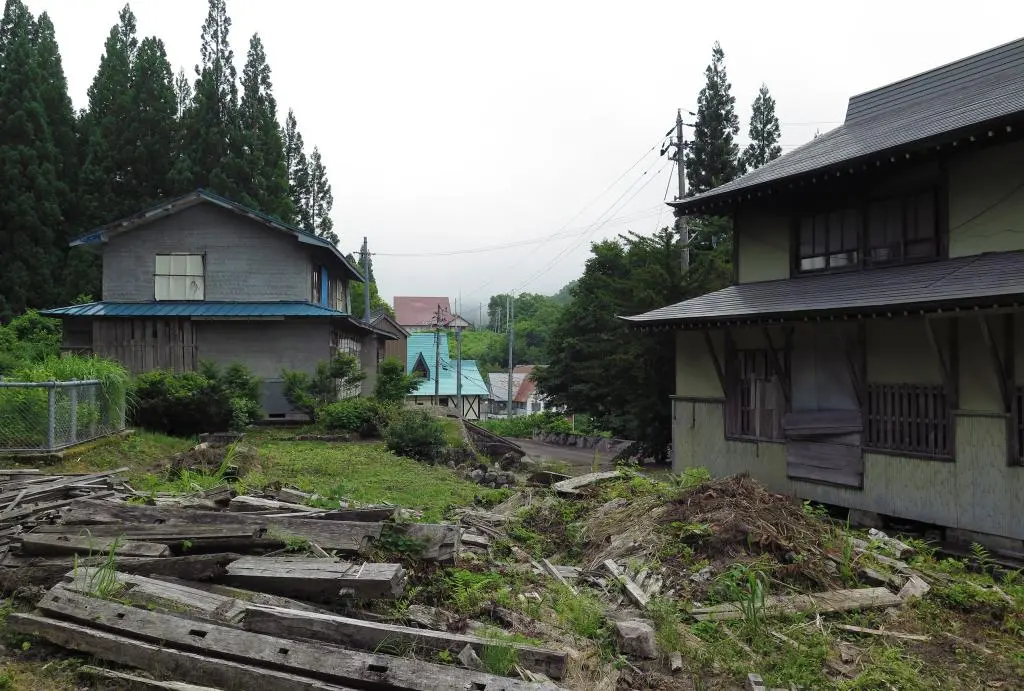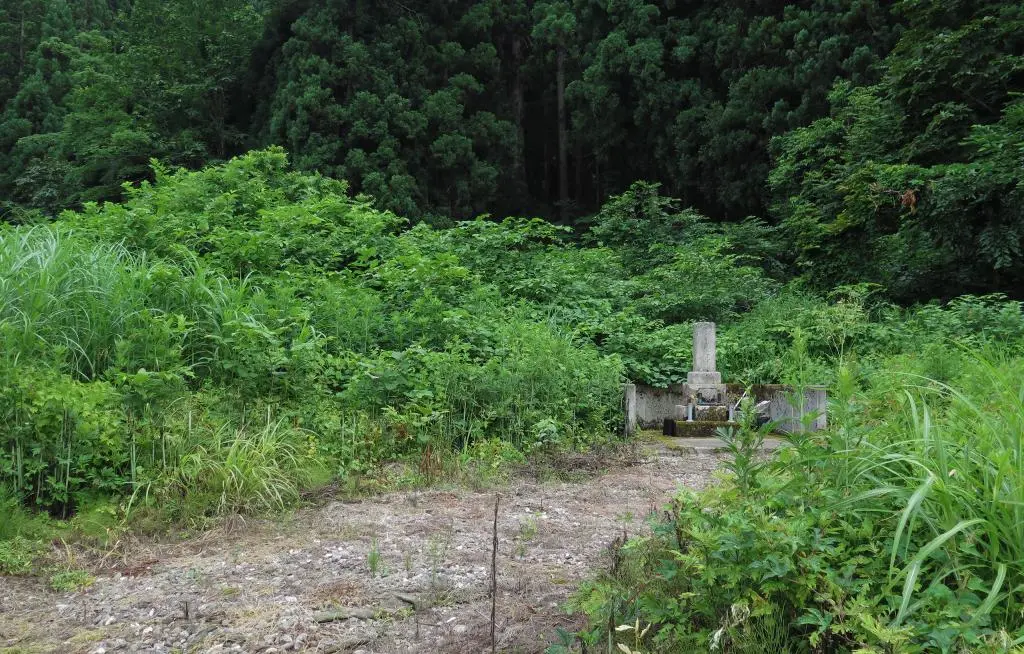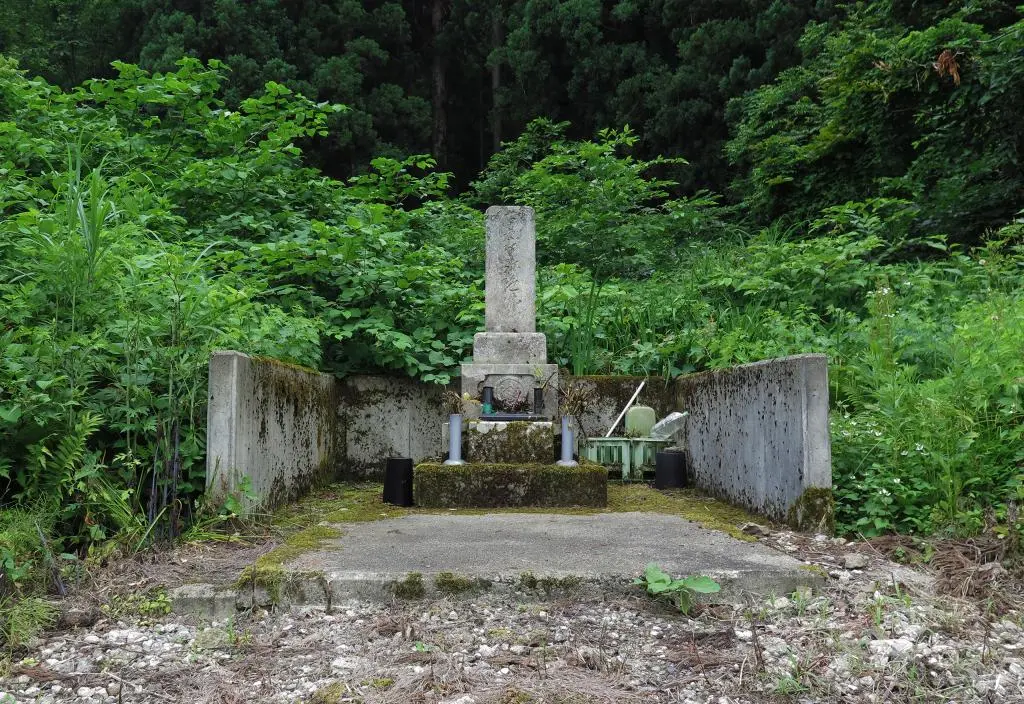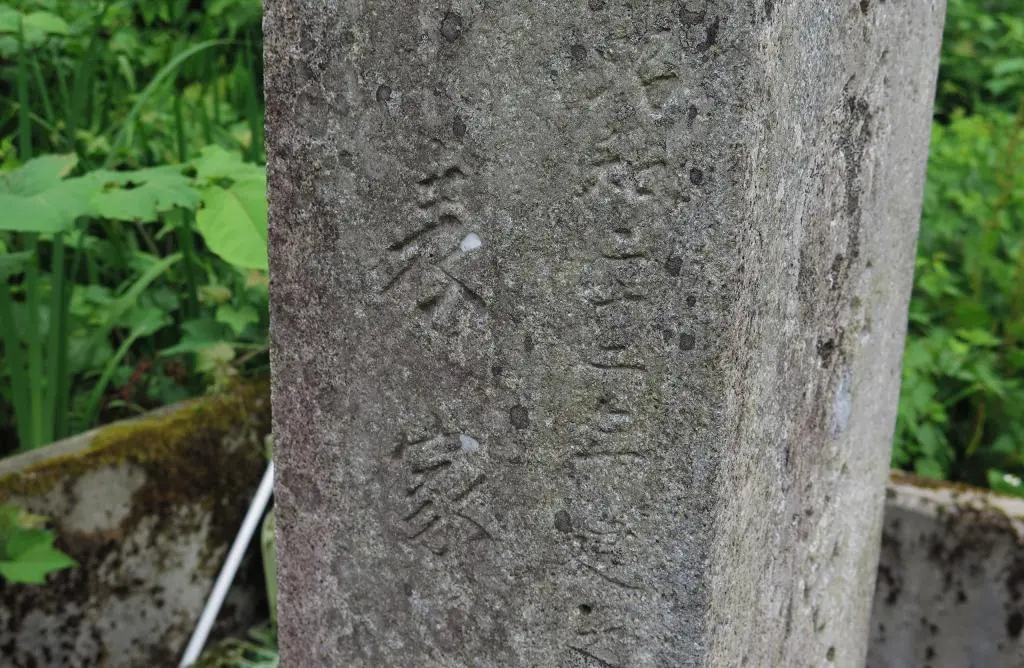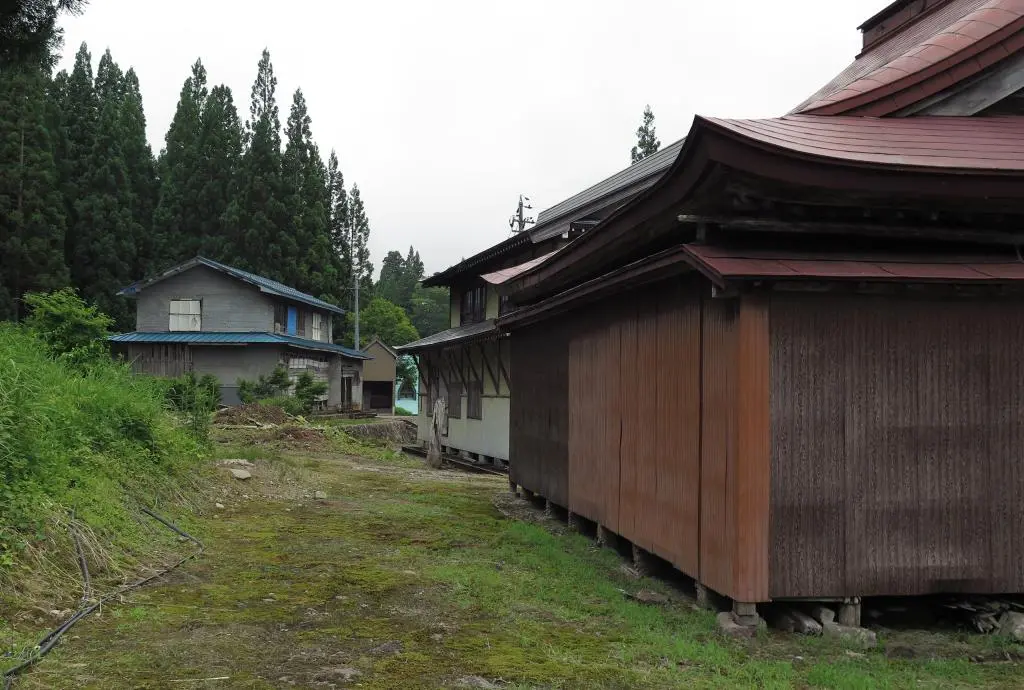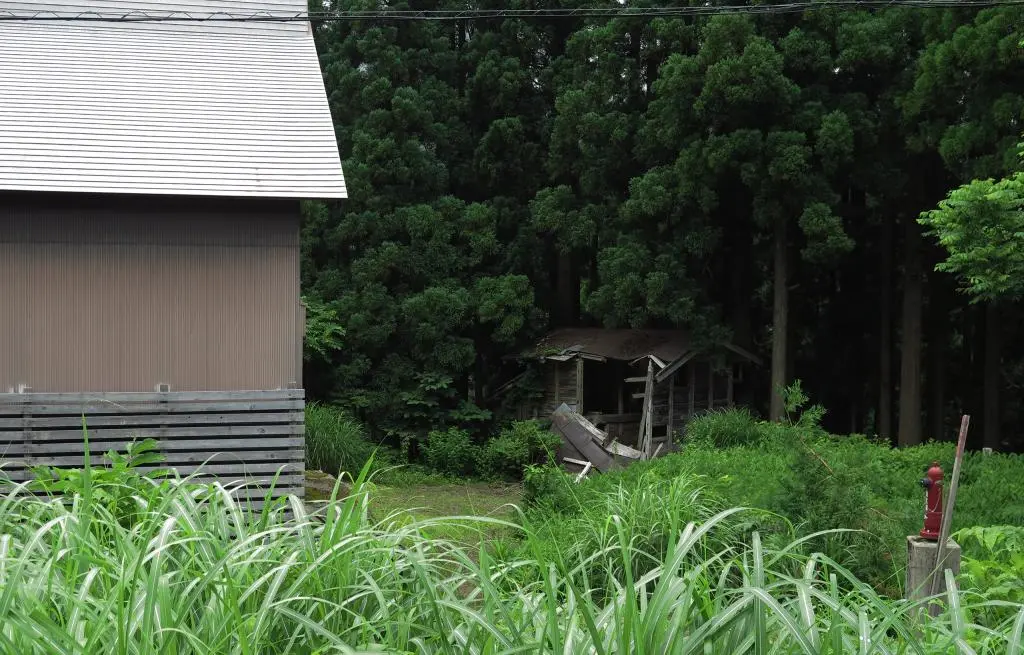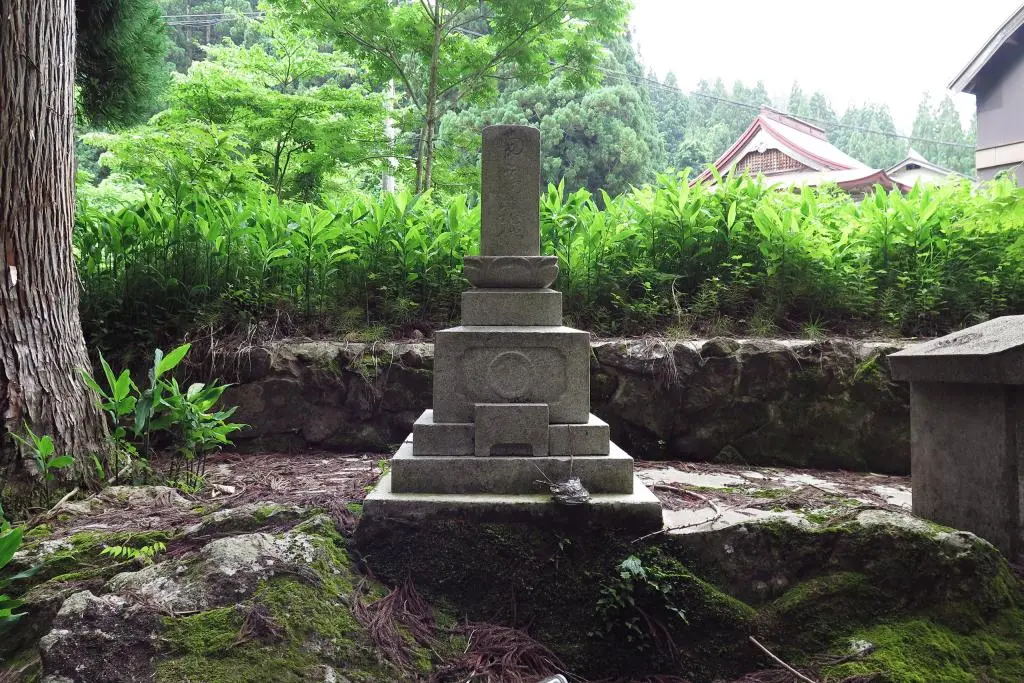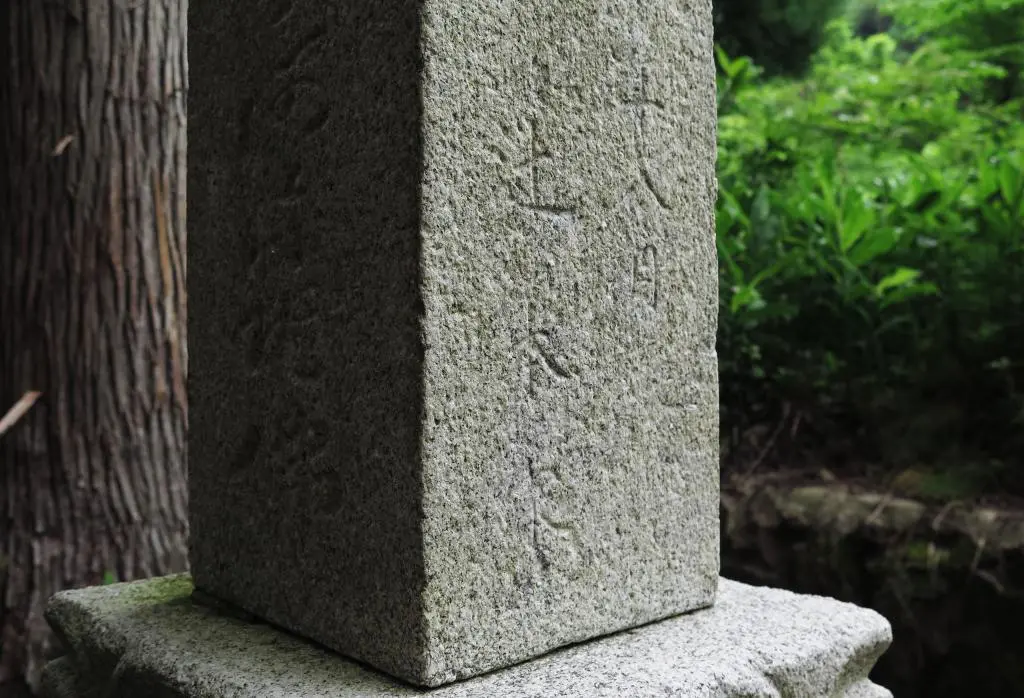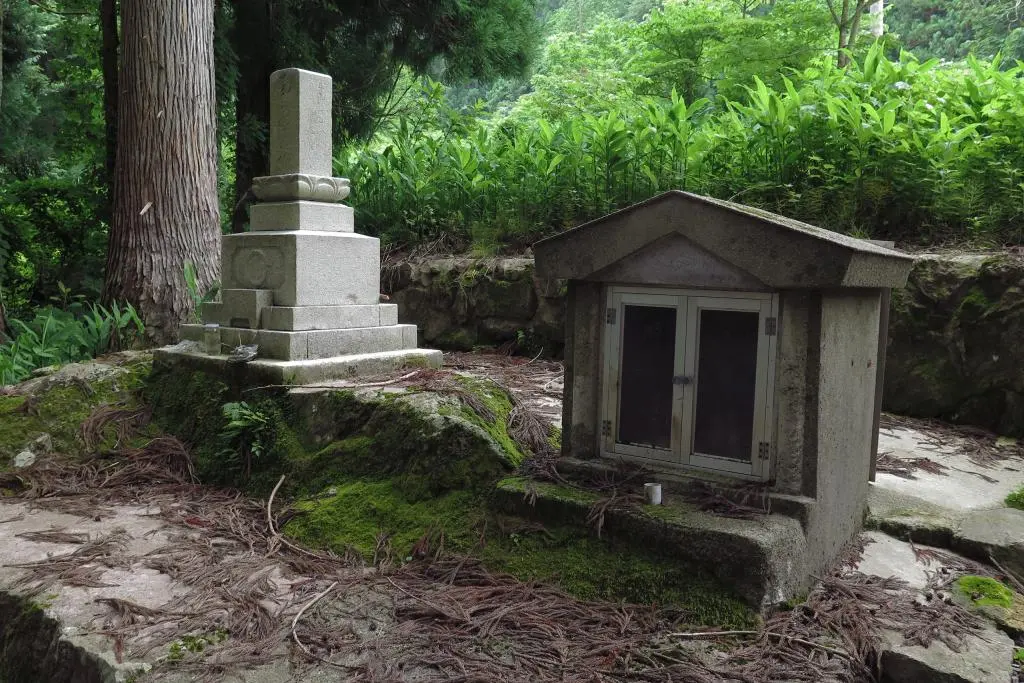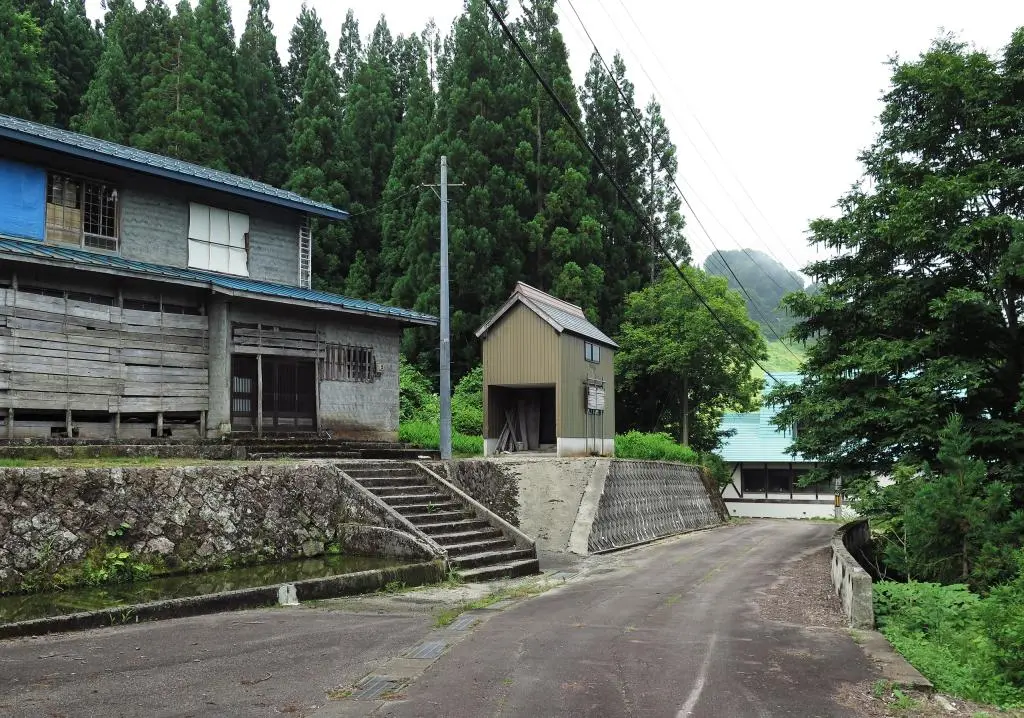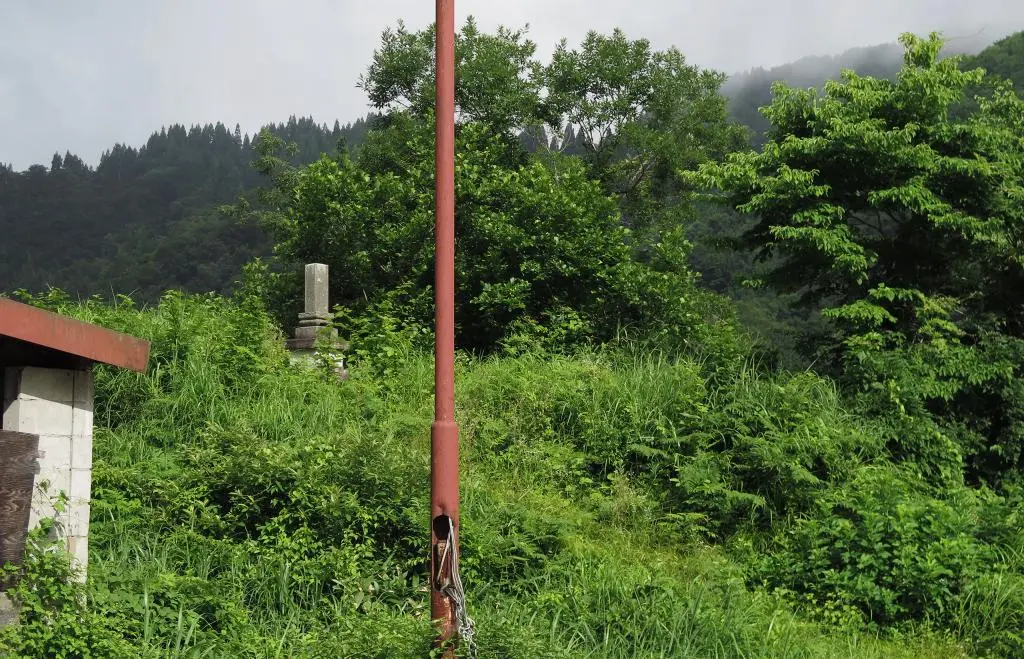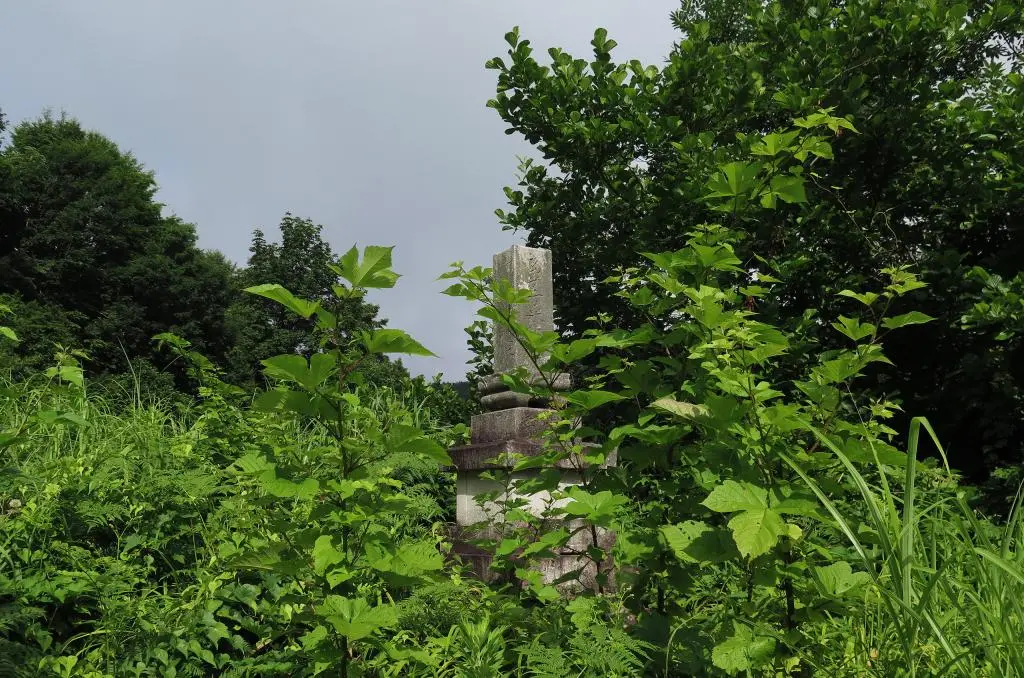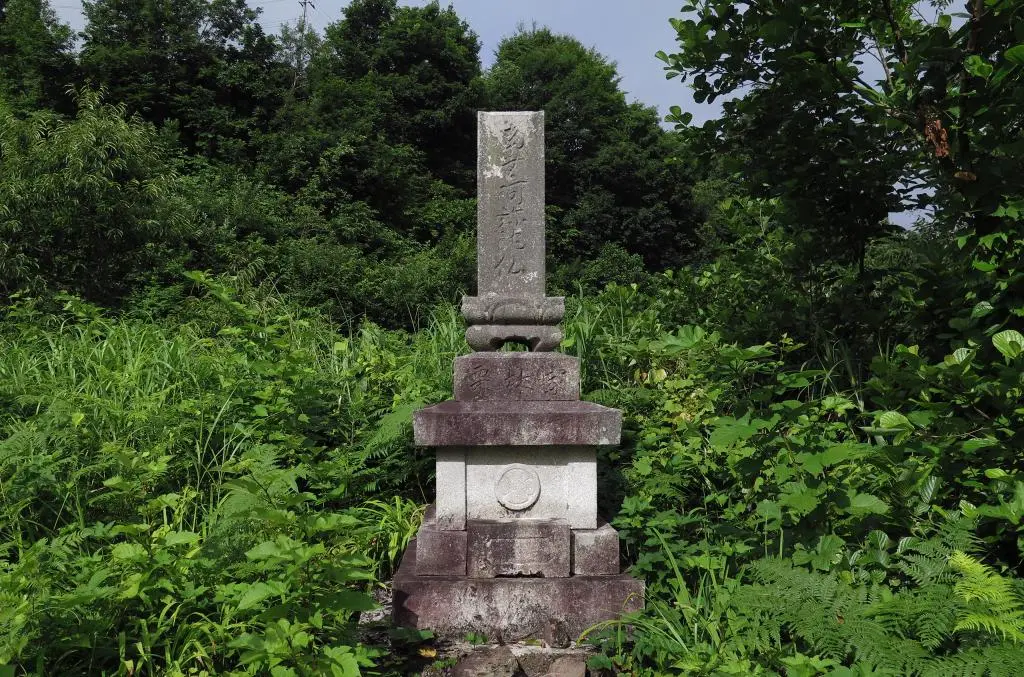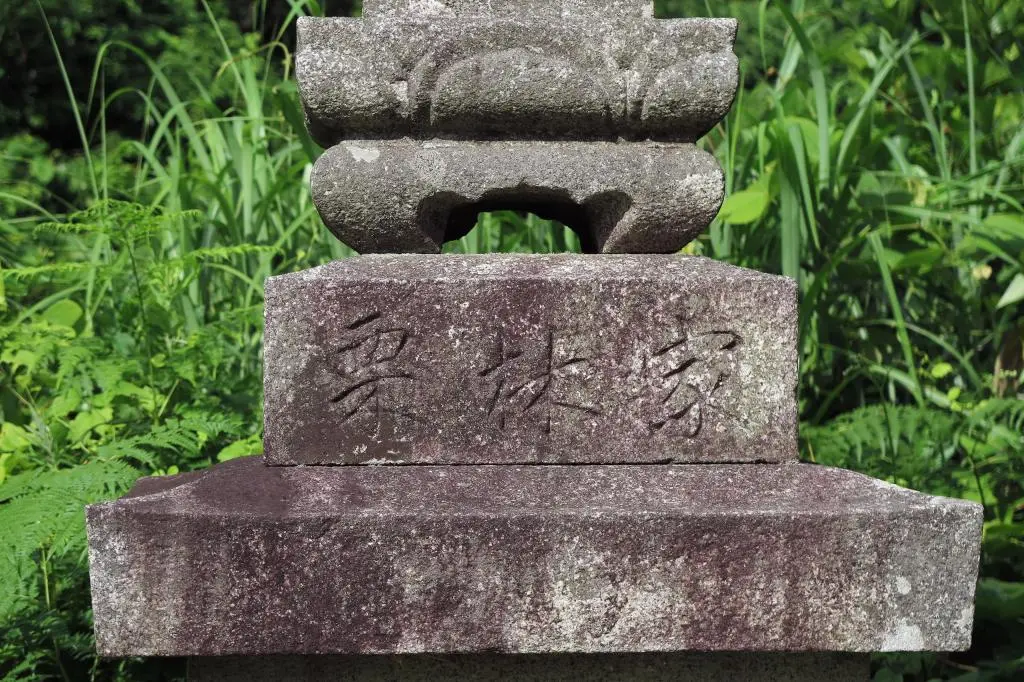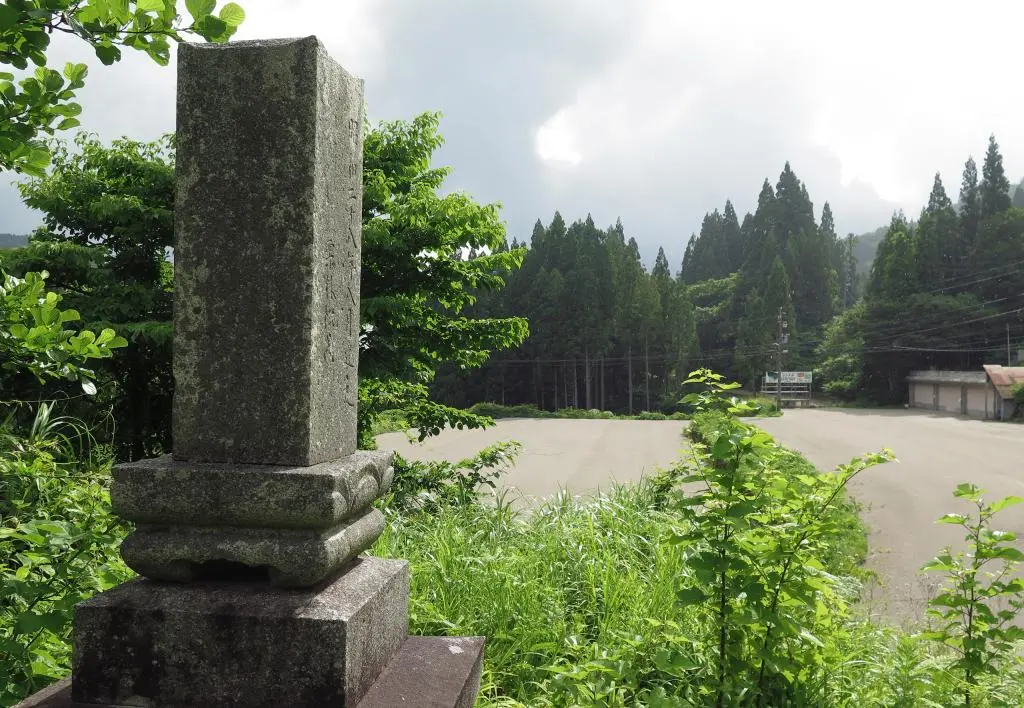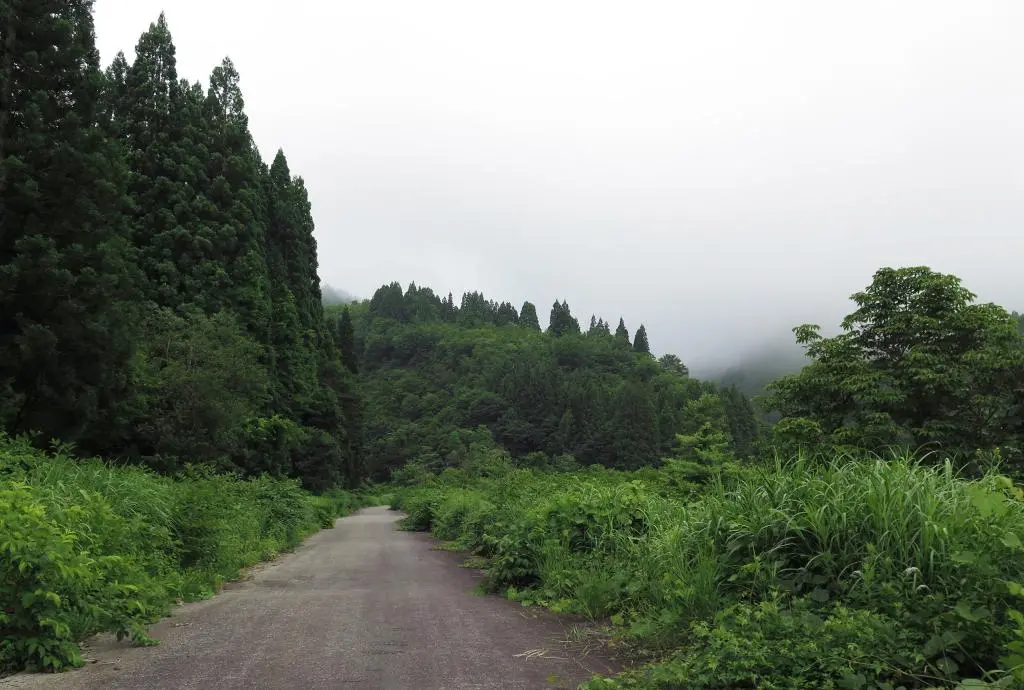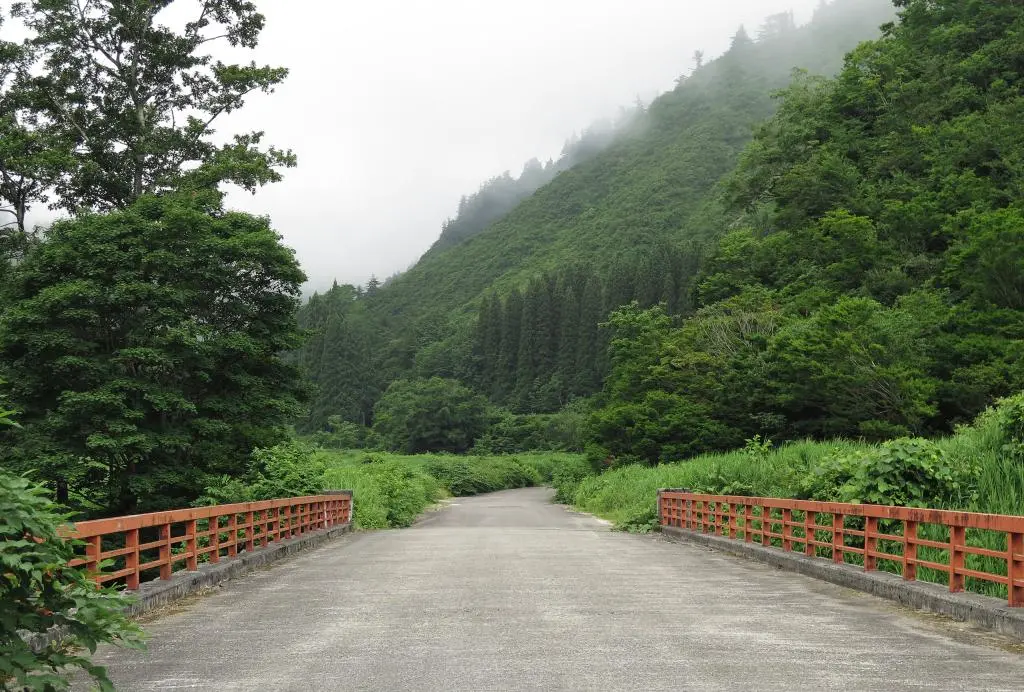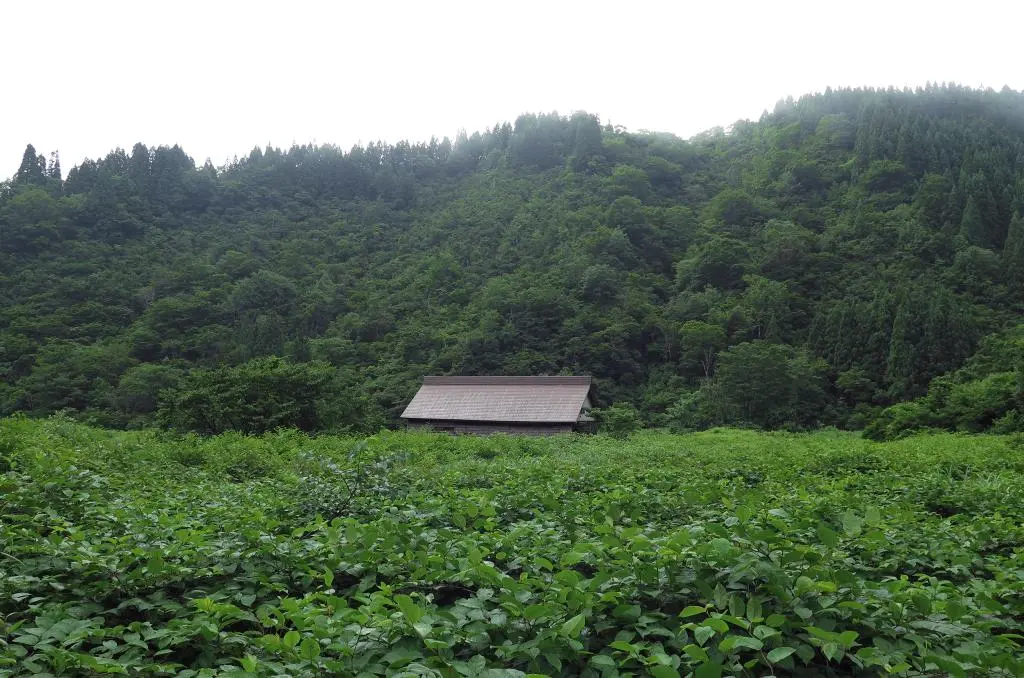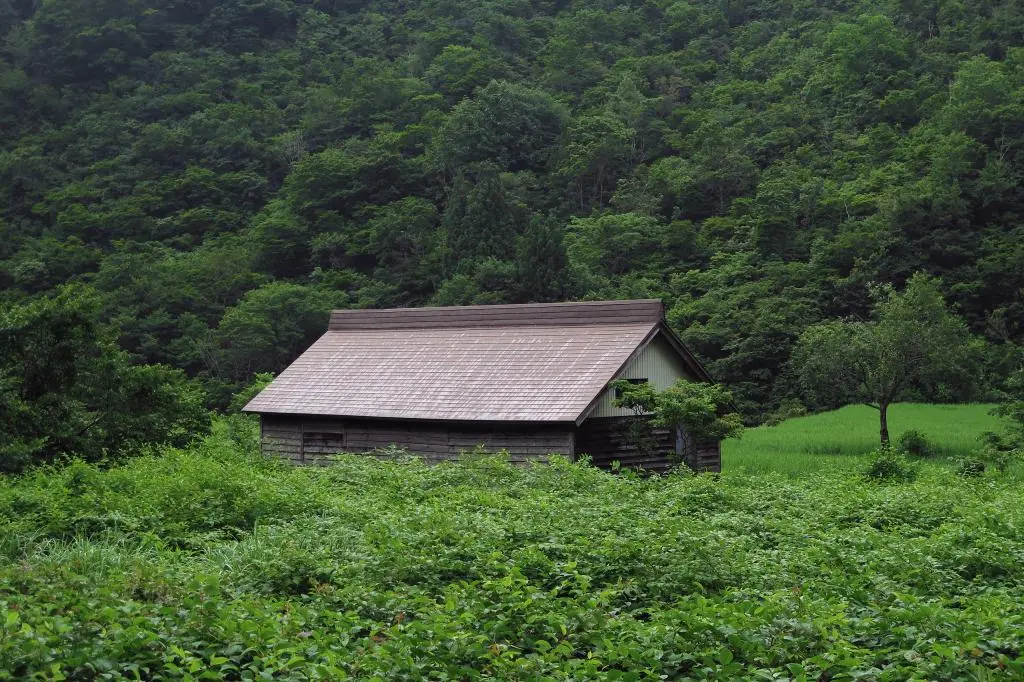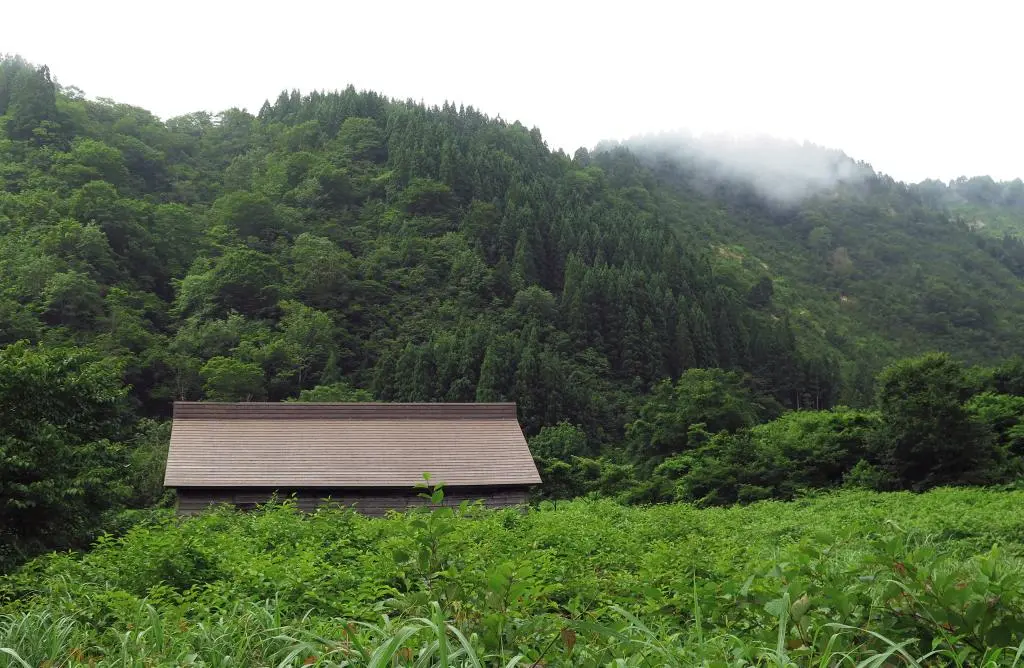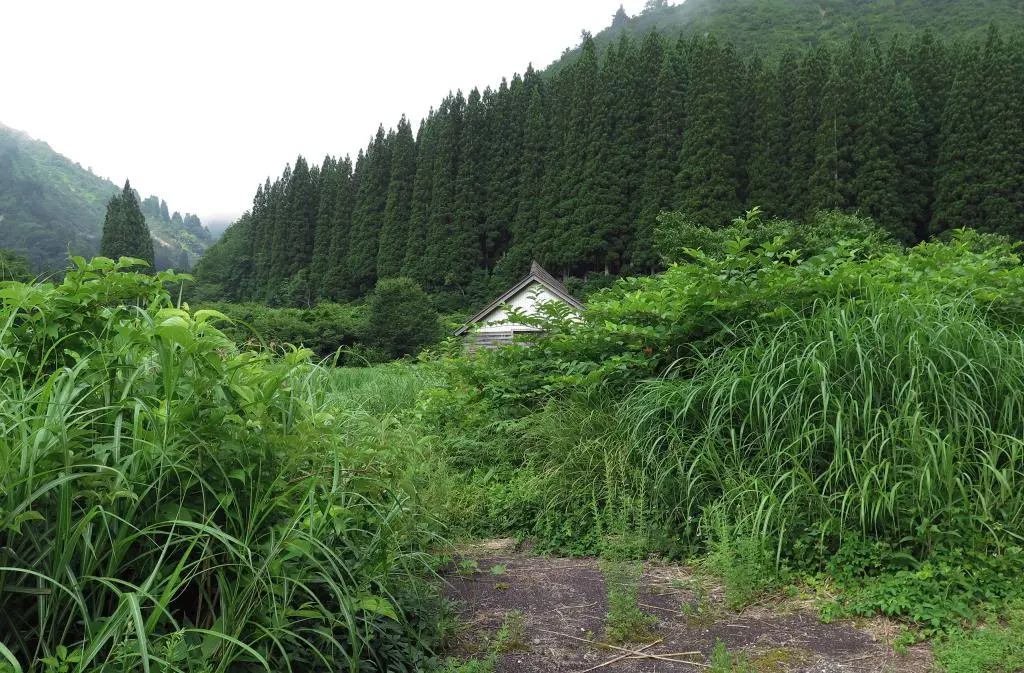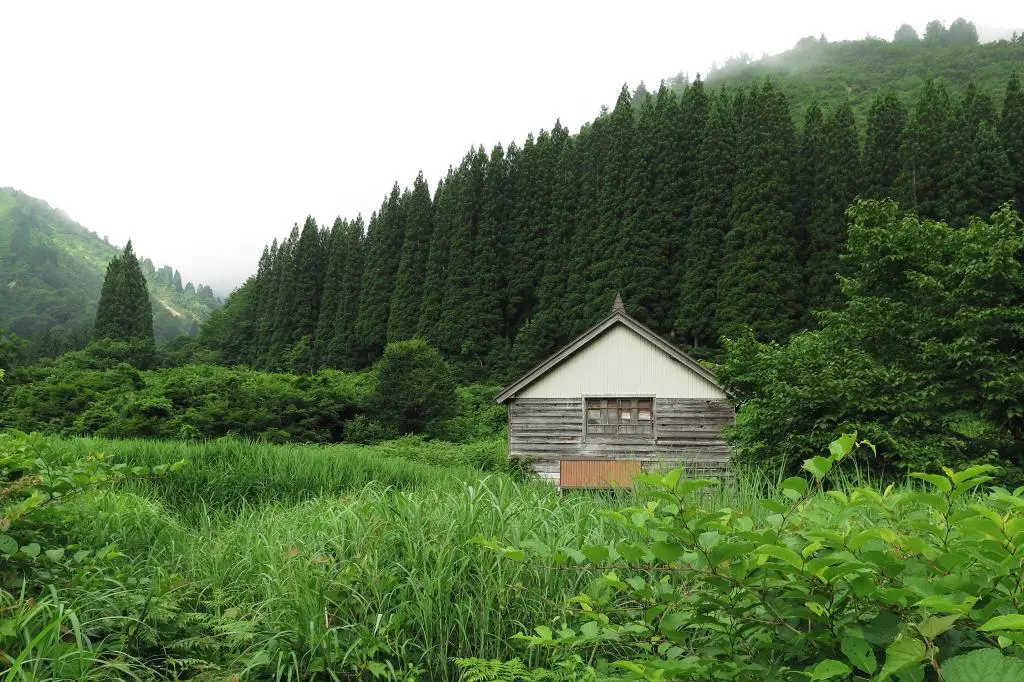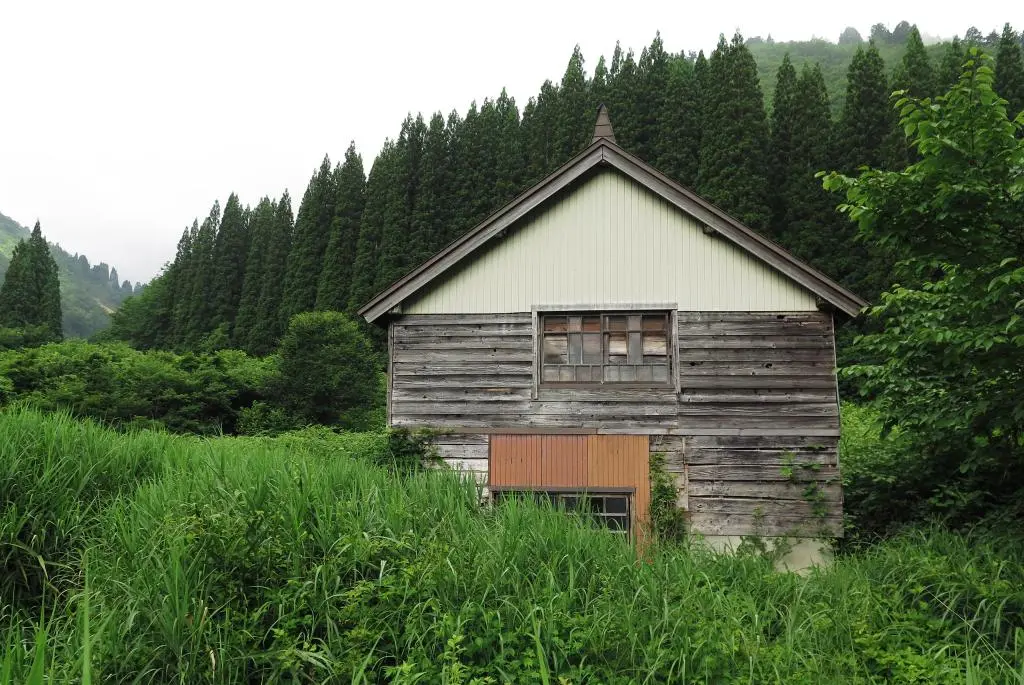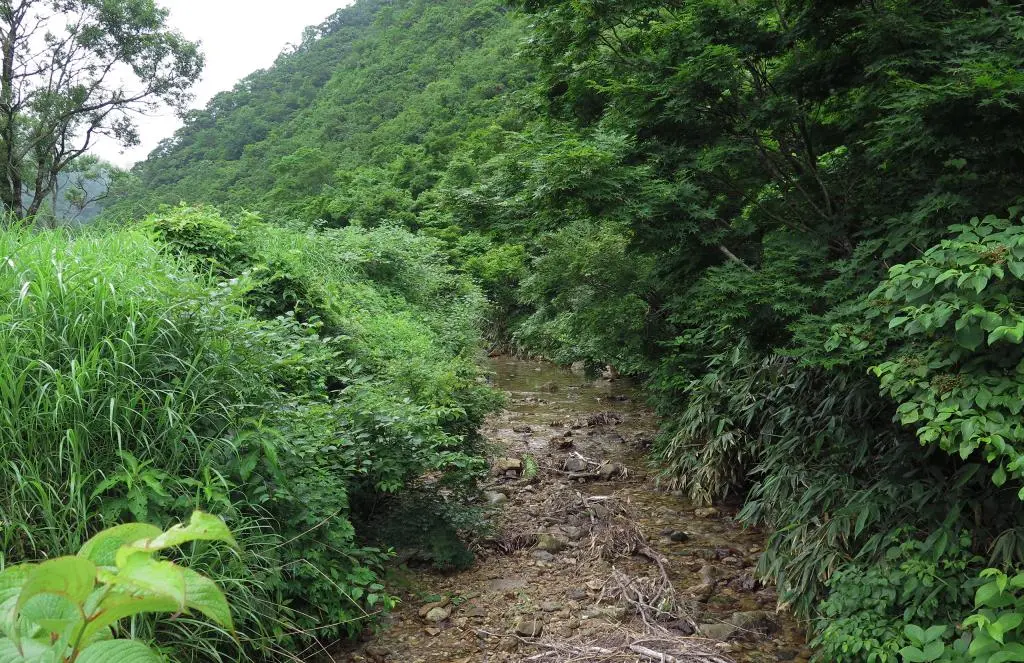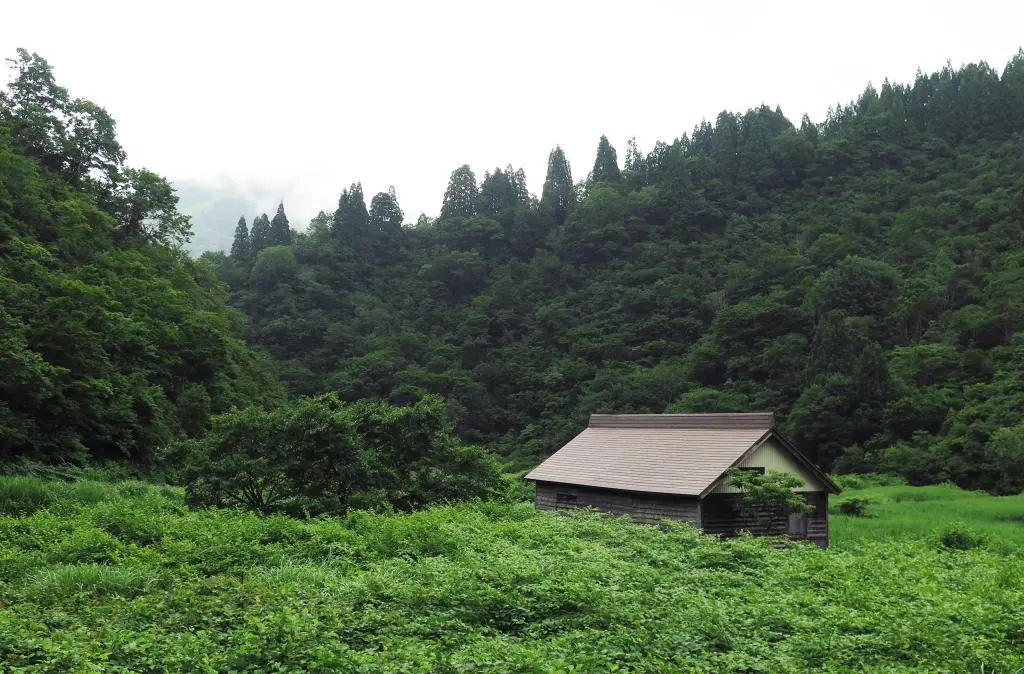Located in a small valley between the two major mountain passes of travel connecting the urban areas of Tonami 砺波町 and Johana Town 城端町 to the large village of Shimonashi 下梨村 (modern day Taira 平村), was the village of Nashitani 梨谷村. Today, what remains of the village is slightly hidden behind the Taira Ski Resort and Restaurant Maple.
There are several houses in the village still standing, and some of the homes seem like they've had some recently maintenance work done of them. According to some online research done by Mr. Murakage, there were people living in some homes until 1982. Although, even though it doesn't seem like anyone is living here today, the families still come back to check on the houses. He and Hayaneko visited in 2011 and found no one there, and neither did I during my visit.
When parking at the Taira Ski Resort, you can see the village poking through the area behind Restaurant Maple. The restaurant seems like its open every day to cater to the construction workers up in the mountains doing whatever work they do. I arrived before the opening time, and the people working at the restaurant were preparing for the day.
The road to the village loops behind the restaurant and goes up the hill. You walk past a grave and some monuments. The monuments were too withered away to fully understand them. The grave was marked as Hotouge Family 朴峠家. Murakage-san was able to research the names of the 28 homes that used to be in the village, and he listed them on his page. The Hotouge Family apparently moved to Osaka in the 1960s.
Still standing in the main area of the village were three homes, and a few sheds and garages. The first home was owned by the Yamazaki Family 山崎家. The next home was owned by the Higashi Family 東家. The Higashi Family had a grave behind their house, but there was no Yamazaki grave. There was a foundation for a small building behind there, too.
All the homes in the area had their windows boarded up, and occasionally some extra supports along the outsides. This was mainly to prevent any structural or internal damage happening from excessive snow and snow melt in the winter. As such, the only access to the homes were the front doors, which were all locked.
There was one more home in this small neighborhood cluster. Rather than wooden supports and protection, it was covered in aluminum siding, which was probably installed in the last 20 years. The whole home seemed like it was perfectly preserved inside its metal shell. Out back, there was a family grave, but I don't remember the name. Guessing, but it was probably for the Tsujimoto Family 辻本家.
In the middle of this neighborhood cluster was the village's temple. The door was open, so I went. It seemed like it was pretty well taken care of for a building that was over 100 years old.
The temple included a shrine behind the folding walls, but covering the inside walls of the temple were names and names and names of everyone who was a member of the shrine. Every little bit of upper wall space was covered in thin wooden planks, each denoting a single person's membership. The planks didn't have any dates, but according to Murakage's page, the history of the village went back further than the Meiji period. Many of the names matched Murakage's listing of famliies.
Looking through my photos, this white plaque was the most recent, dated Heisei 10 or 1997 平成十年吉日. The title says 梨谷村道場修繕工事一式, which seems to translate as Nashitani Village Dojo Repair Work All Members. And then it lists 66 members, and an additional 3 executive members 実行委員. The 3 executive members are Nakai 中井, Yamazaki 山崎, and Arai 荒井. In fact, there are many planks throughout the temple (or dojo?) of the Yamazaki family. Maybe their family were the mayors of the village.
So, so far, we've seen the Yamazaki Home, Higashi Home, village Temple or Dojo, and Tsujimoto Home. Behind the Tsujimoto home were storage building that were half torn apart and perhaps a few more winters away from complete collapse. The road continued past this cluster, which revealed the Nakai Home 中井家 on the bend of the road.
There was a walkway going past the Nakai Home into some farm fields and a storage shed was some equipment that was probably still used 10 years ago. Next to the storage shed was the family grave for the Uji Family 宇治家.
This small area felt very classic country, like the Shire in Lord of the Rings. A wavy stone path with a stone wall connecting homes to homes with circular plots of fields for whatever they grew.
Returning to the Nakai Home, their family grave was out front, too. It's important to note that all of these graves were very clean, recognizable, and had recent flowers placed on them. It would seem like these families, whether the original residents are still alive living elsewhere or their descendants, still return here after winter to maintain the houses and the graves. Actually, a whole field of grass near the Nakai home showed signs of it being mowed in the last few weeks.
Nashitani Village is abandoned in that no one lives here, but it's not so abandoned that people haven't forgotten about it.
In fact, the final home in the area, the Kuribayashi Home 栗林, had quite a lot of recent repair work done on the front, including a new door with its wrapping still on.
Murakage's page again lists all the families living in the village since the Meiji period, and only 5 families were still living in Nashitani by 1982 (Showa 57). Those 5 families were Yamazaki, Higashi, Tsujimoto, Arai, and Nakai. The Arai family married into the Yamazaki family. There was also the maintained grave for the Uji family. They apparently only moved to Johana, a mere 10km away.
The Kuribayashi family, though... Murakage lists them as having moved to either Kyoto or Hokkaido in the 60s. I wonder who fixed up their home.
Those 5 main homes and the temple, plus a garage and a few other storage buildings were all that I could find in the area. Apparently, there's another home further up the Nashitani river.
Murakage-san visited Nashitani with another abandoned village researcher named Hayaneko. He does a lot of research on these villages by looking up old schools, specifically branch schools. Branch schools are extensions of the main school in the area that cater specifically to the residents of remote villages. It's often too far and too dangerous to have the kids travel to school each day, so a local school would be built and a teacher would live at the school during the week or sometimes for the whole winter.
Out here, the school was named Taira Village Shimonashi Elementary School - Nashitani Branch School 平村立下梨小学校梨谷分校. According to his research, the school was classified as a Grade 3 Remote School and had 24 students in 1959 (Showa 34). It was apparently built in 1902 (Meiji 35). According ot Wikipedia, the branch school was officially closed in 1971. Apparently it was turned into a community center after it closed, but there doesn't seem to be any trace of it left.
Any elementary students left in the area went to Shimonashi Elementary School directly after the branch school closed, which became much easier with the completion of the Nashitani Tunnel in 1973.
Later in 1999, the two elementary schools in the area, Shimonashi Elementary and Higashi Nakae Elementary both closed when Taira Elementary School was established. Not much later, in 2004 during the phase of rural municipal mergers across Japan, the whole southwestern area of Toyama became Nanto City. In 2006, elementary school students now went to Kamitaira Elementary School,
I feel like the graves and the temple are the most interesting part of this village. According to Google Maps, the name of the temple of the Nashitani Nembutsu Dojo 梨谷念仏道場. Apparently, Nembutsu is a specific sect of Buddhist spread a priest named Rennyo 蓮如上人 who lived in the Gokayama mountains. He began preaching about Joho Shinshu during the Muromachi period and gained many followers in the mountains and in Nanto and Johana Towns.
During the Edo Period, he was able to build temples in many of the small mountain villages for the locals to practice the religion. The temples were apparently unique in that they were as large as a normal homes, and priests could live in them. Looking back through some names, the priest of Nashitani may have been named Anchi 安地.
Each one of the graves are nearly identical with the exception of the famliy's name. The top reads 南無阿弥陀佛 or Namuamida Hotoke. Namuamida is Buddha. Hotoke, I think, means statue or monument. Maybe it doesn't mean grave after all... But, I think these monuments were still erected to pay respects to the families of the past 200 years. Weird that I never saw the Yamazaki one.
While it does feel like the many pockets of society dotted throughout the Gokayama mountains have been slowly reclaimed by nature, I'm actually surprised how much information I could find out about this one. If I did more research, I wonder if I could find out more about the people who lived here, and what their modern-age descendants might be doing.












































































































